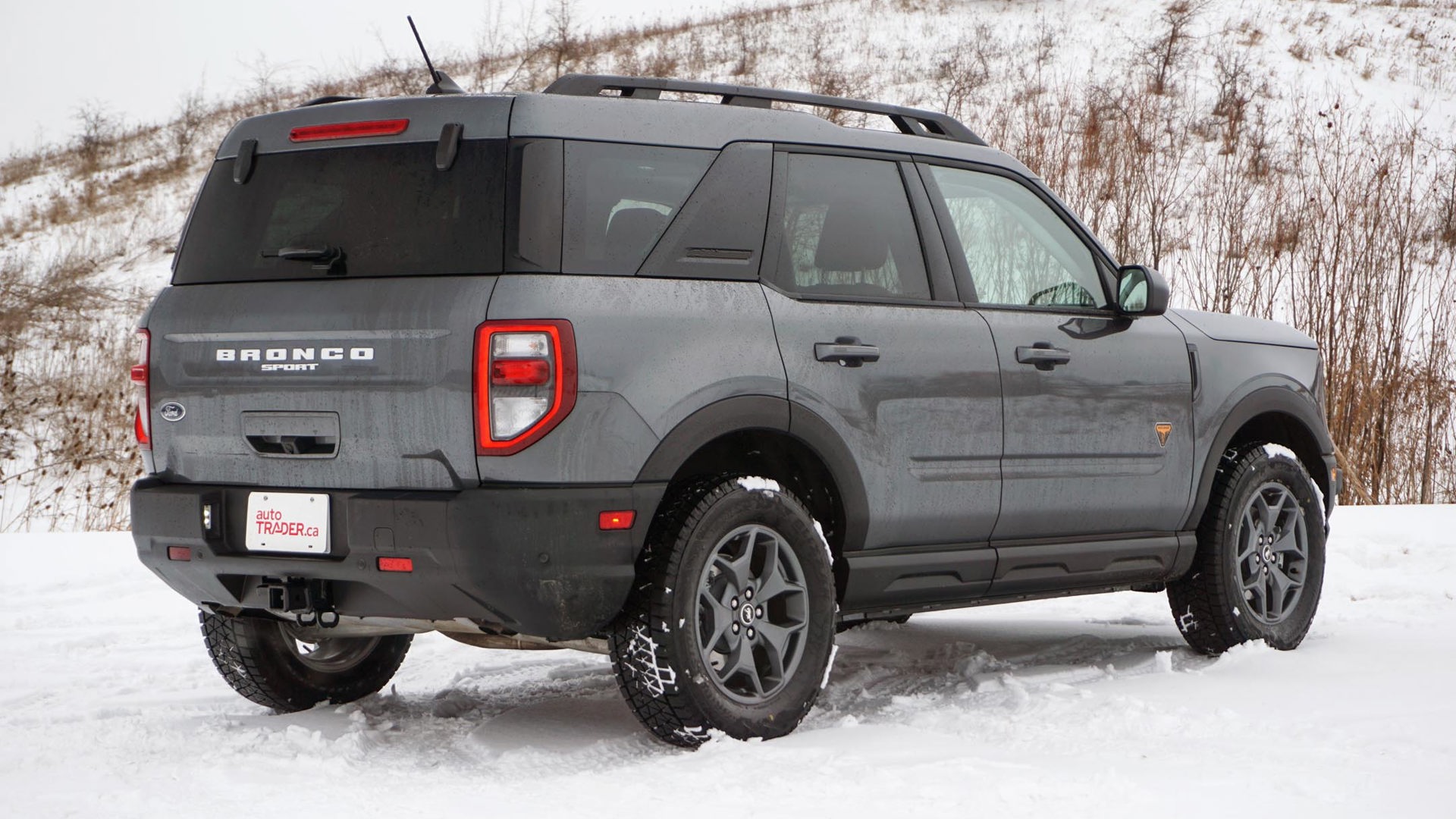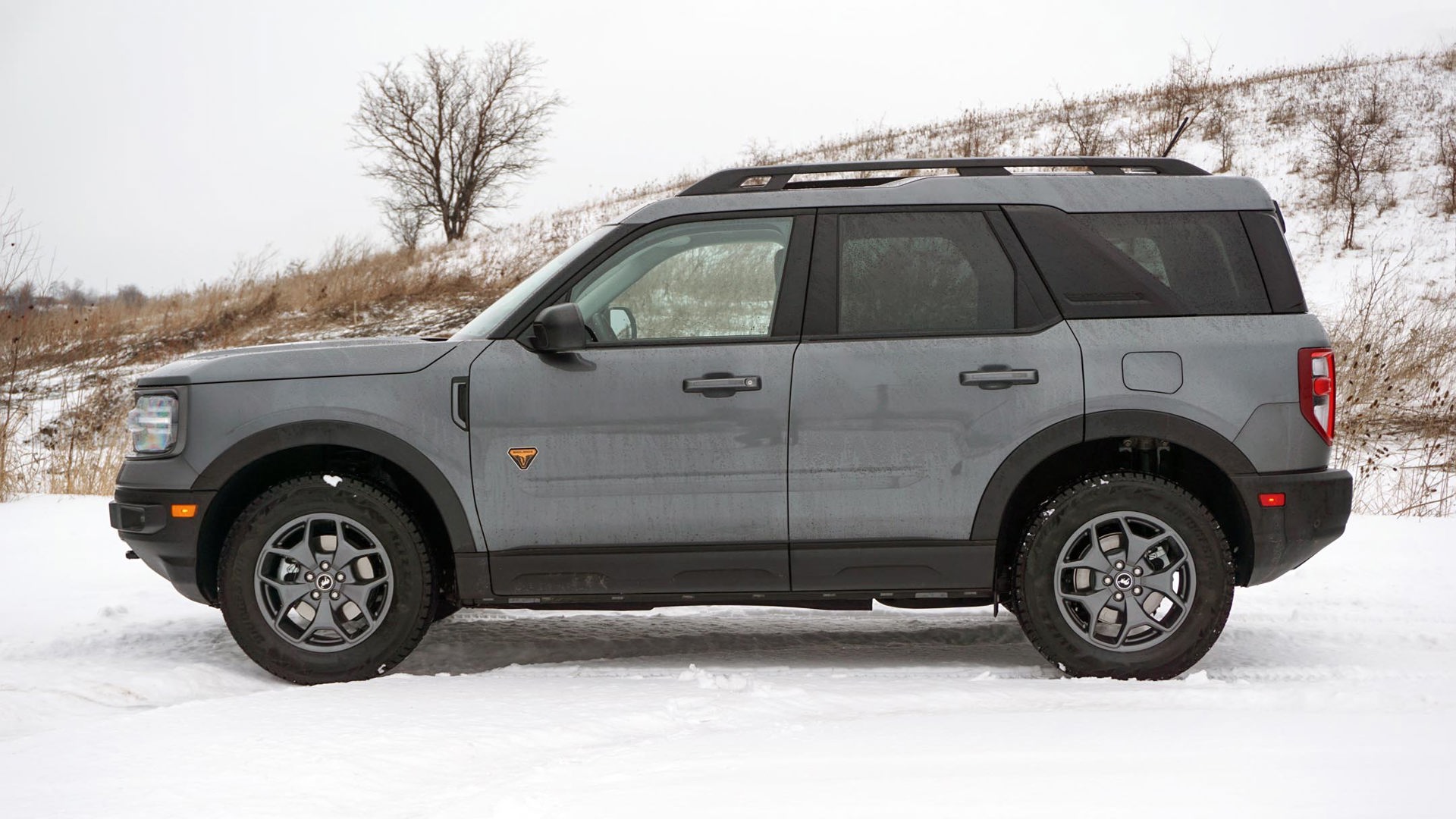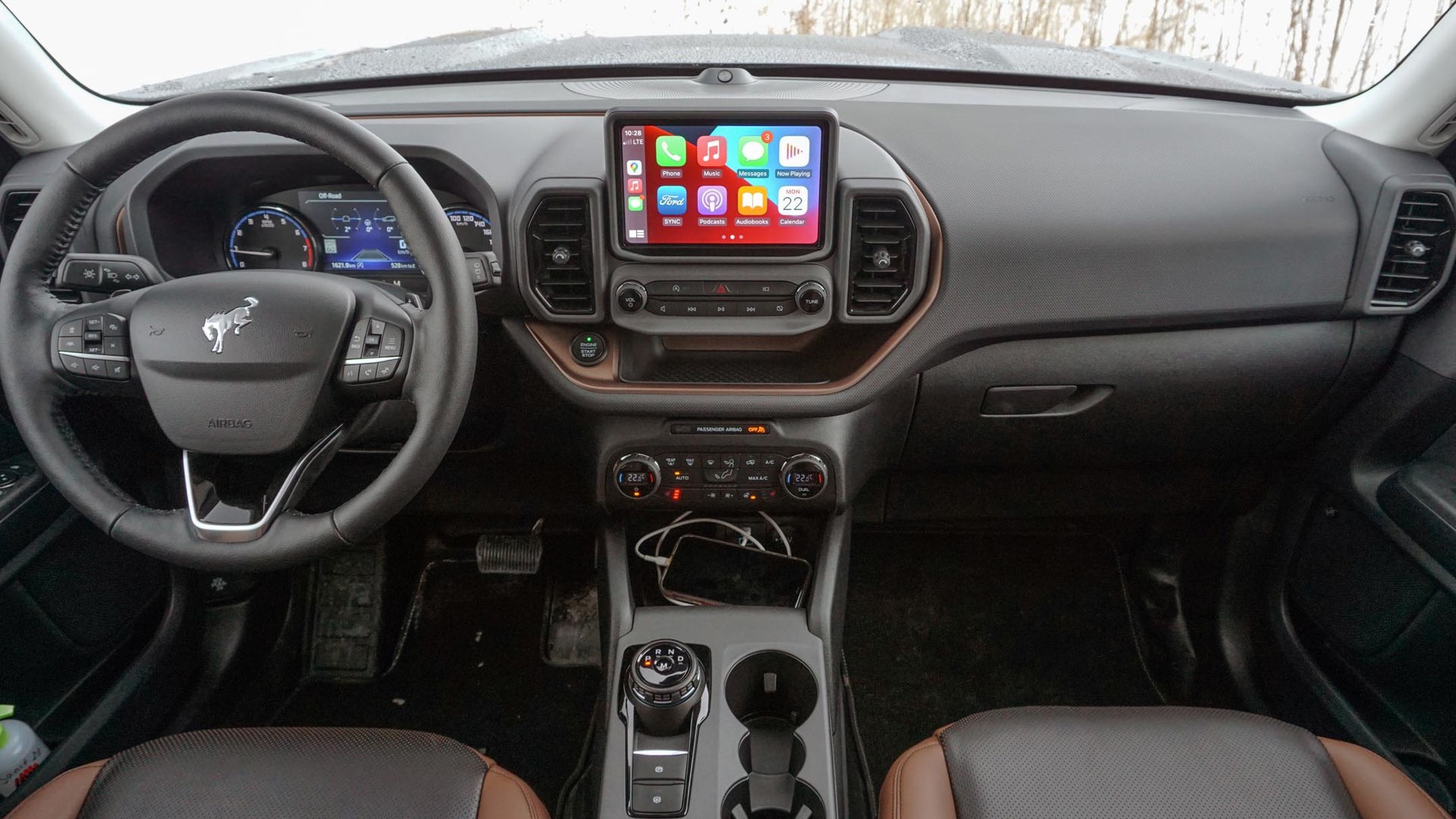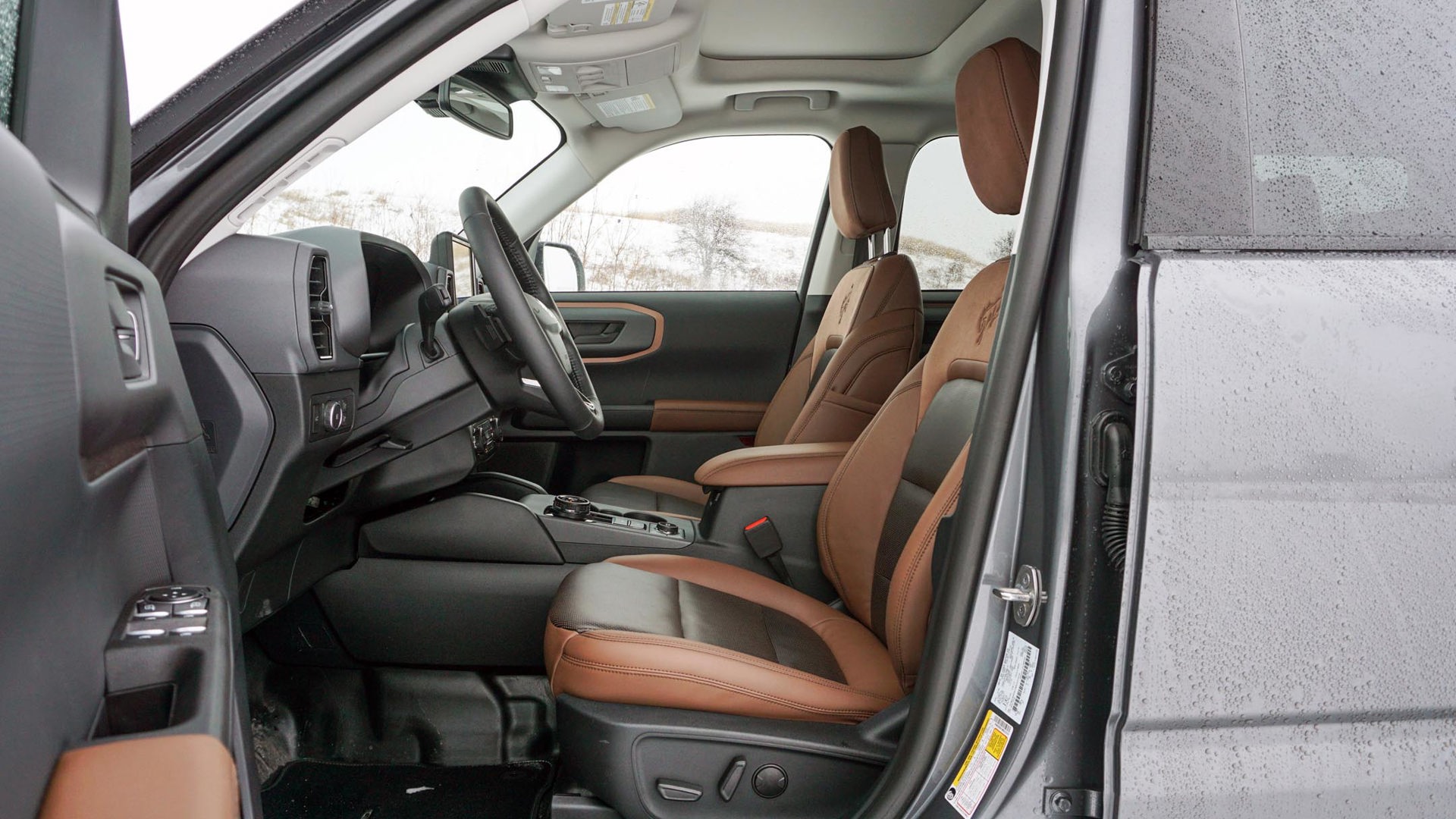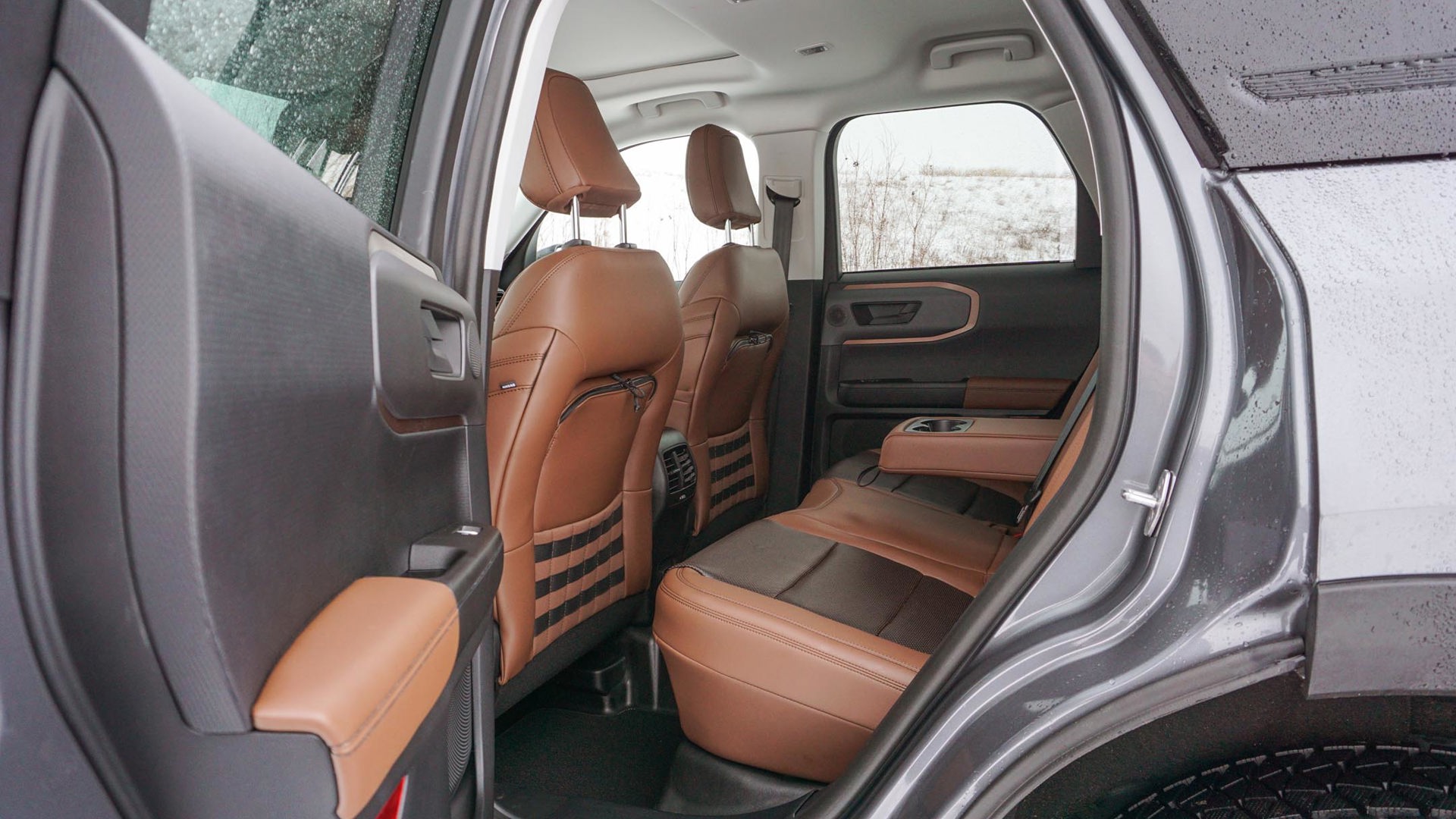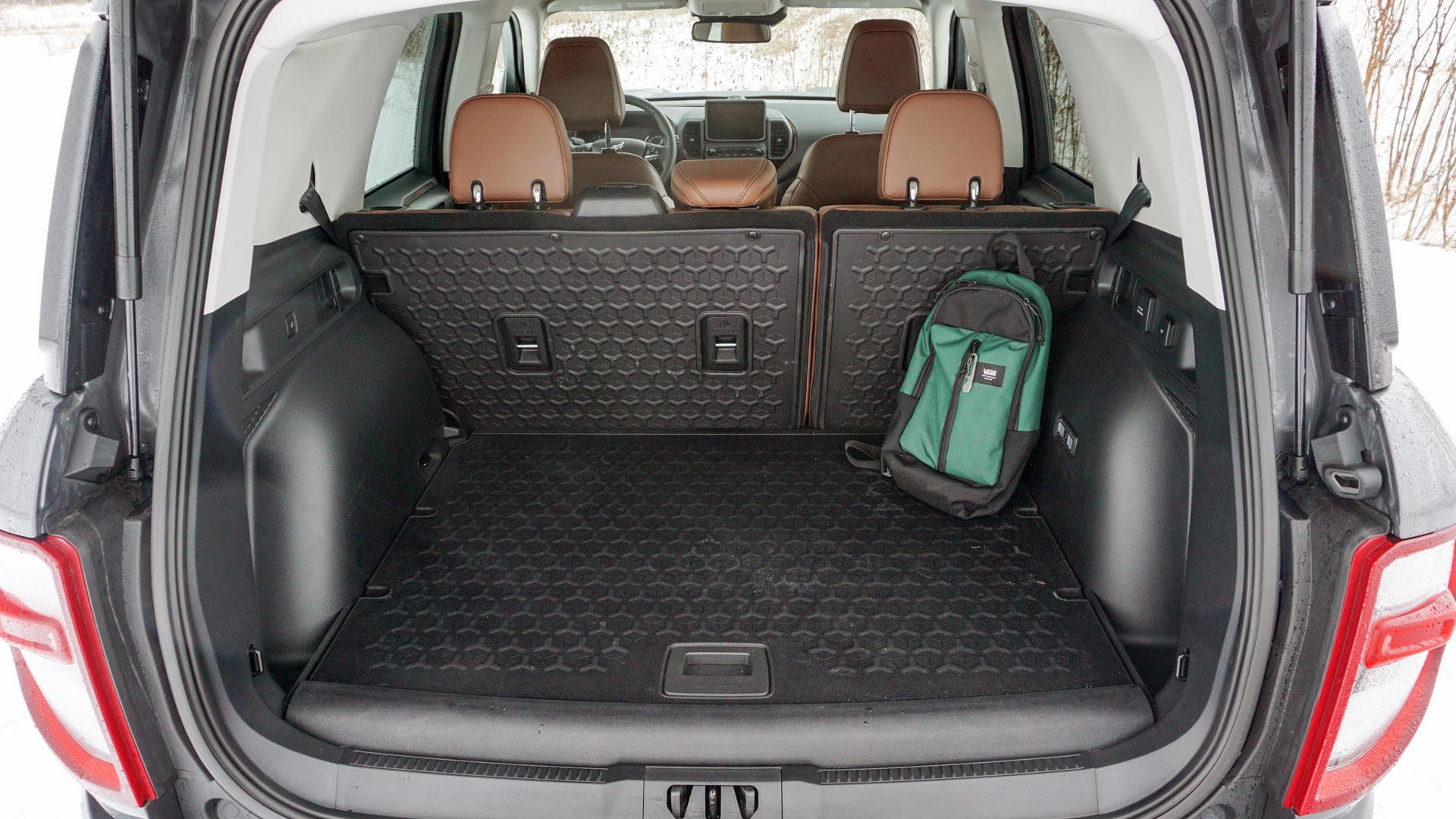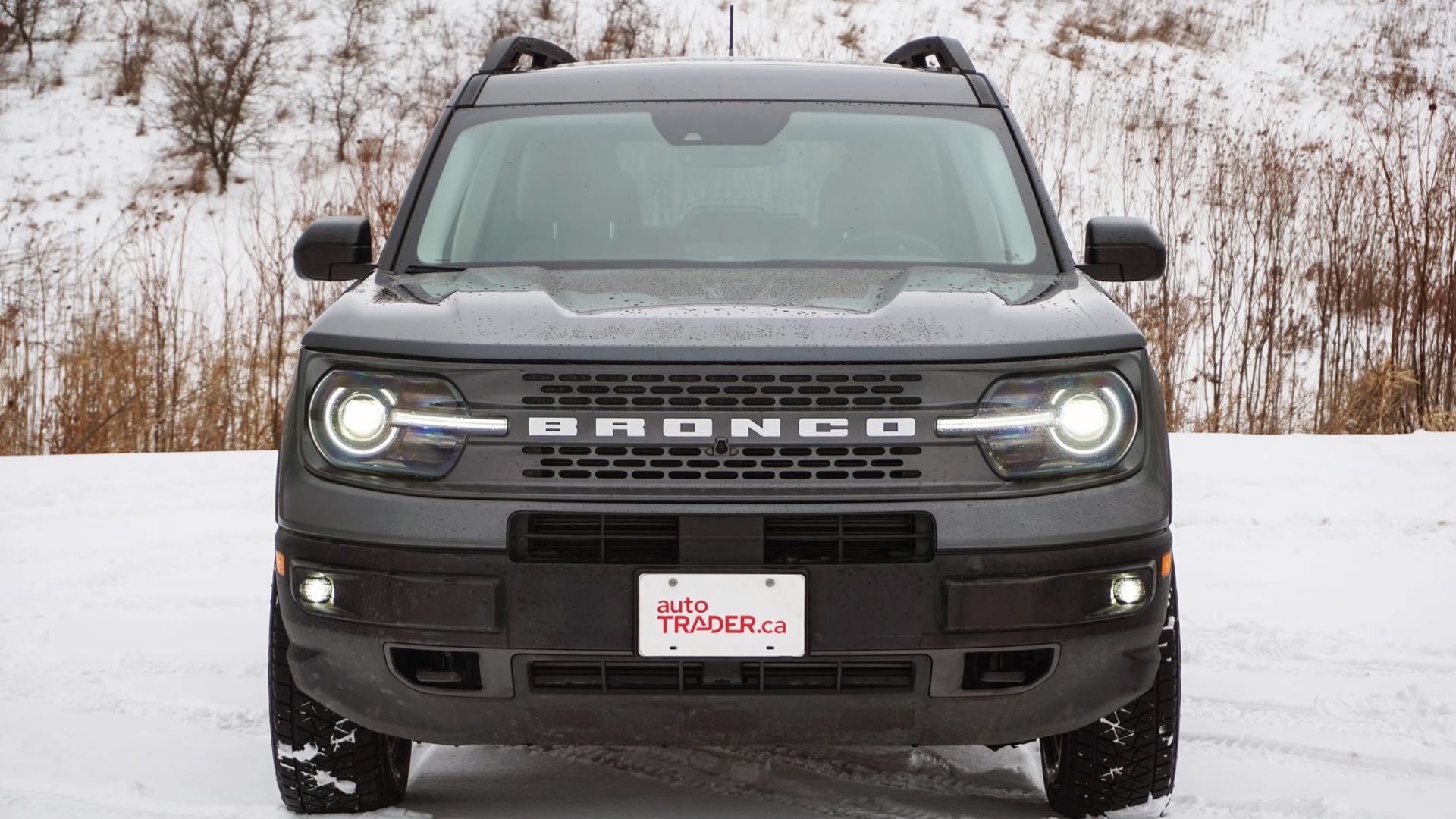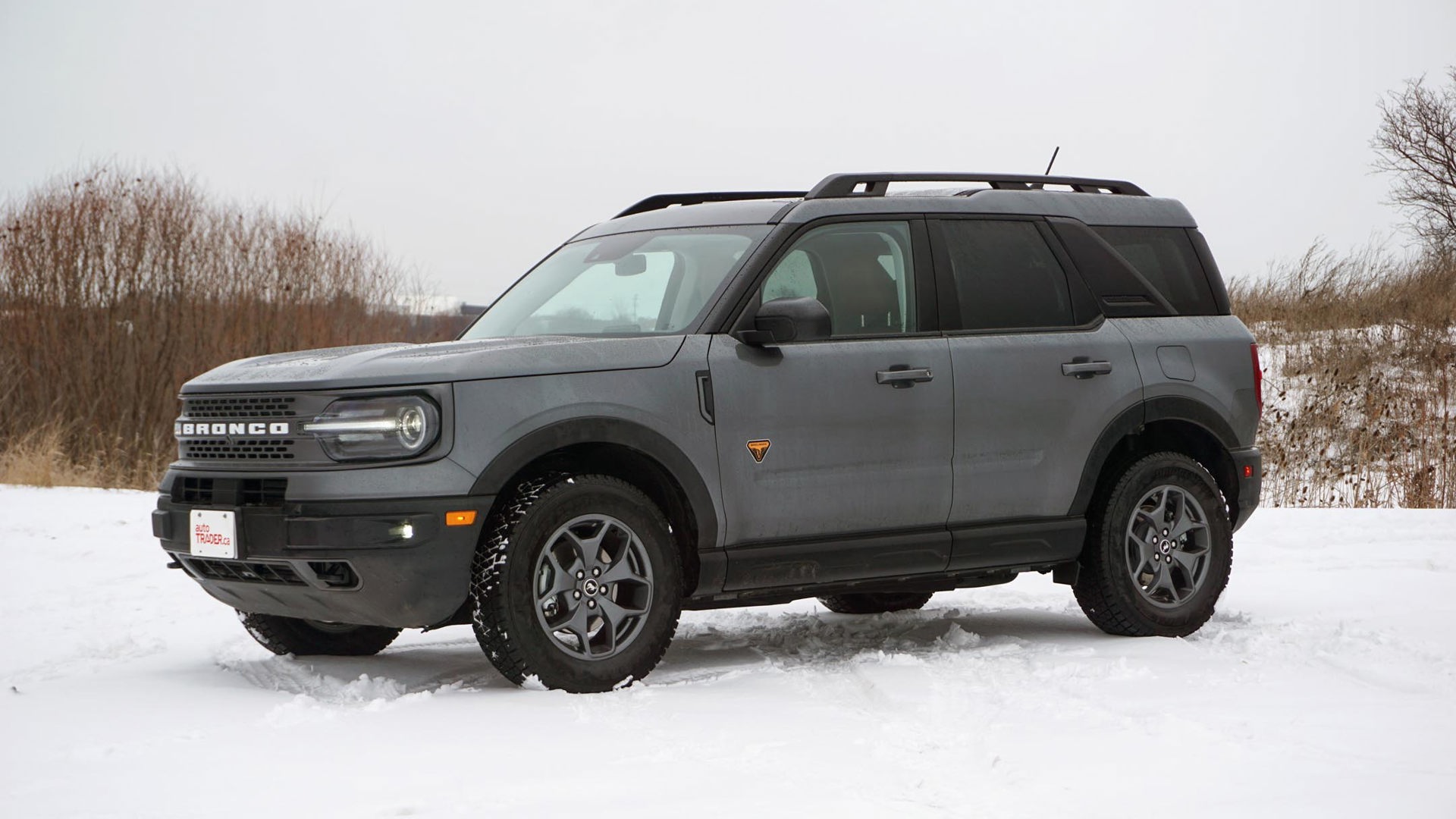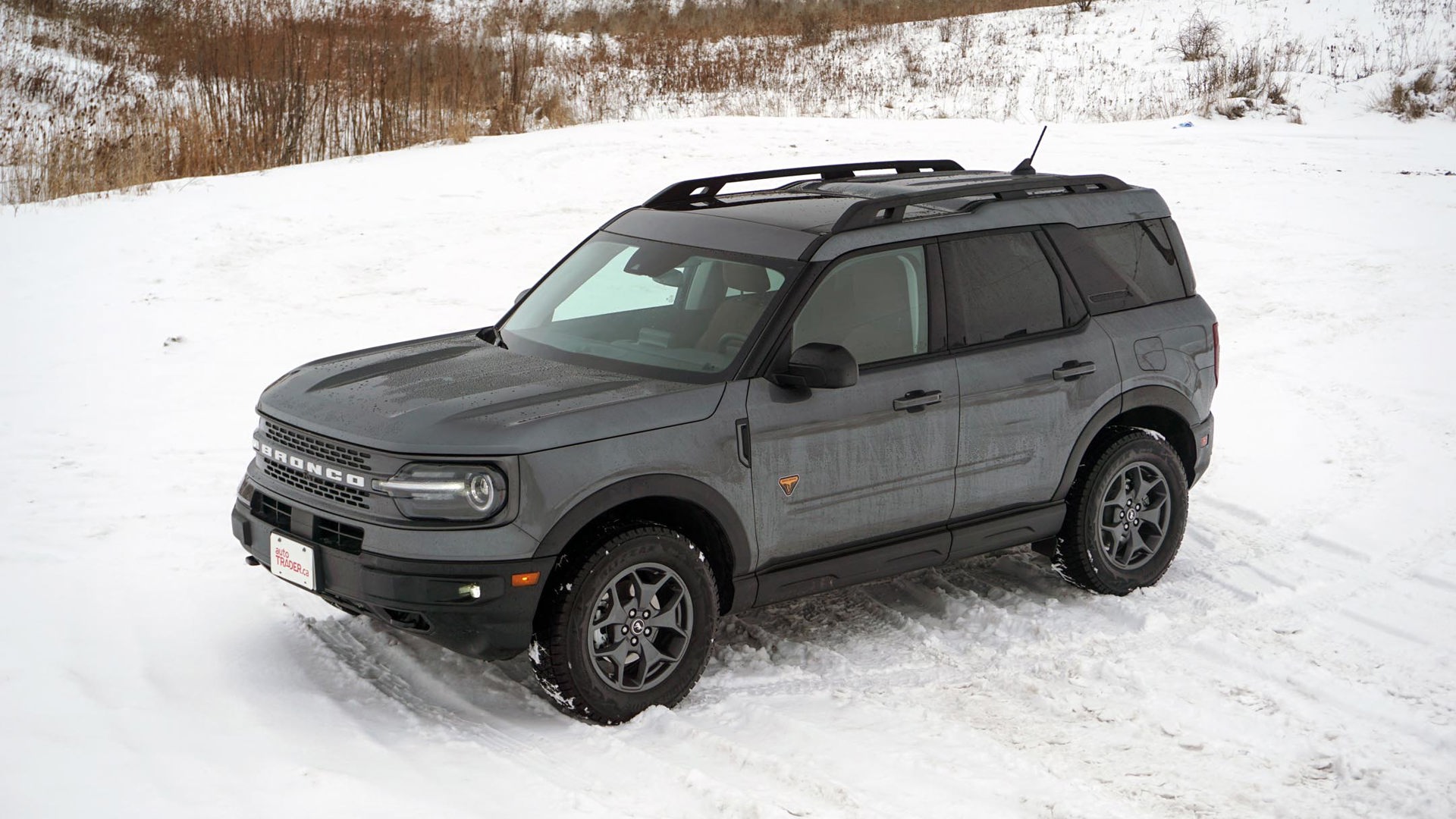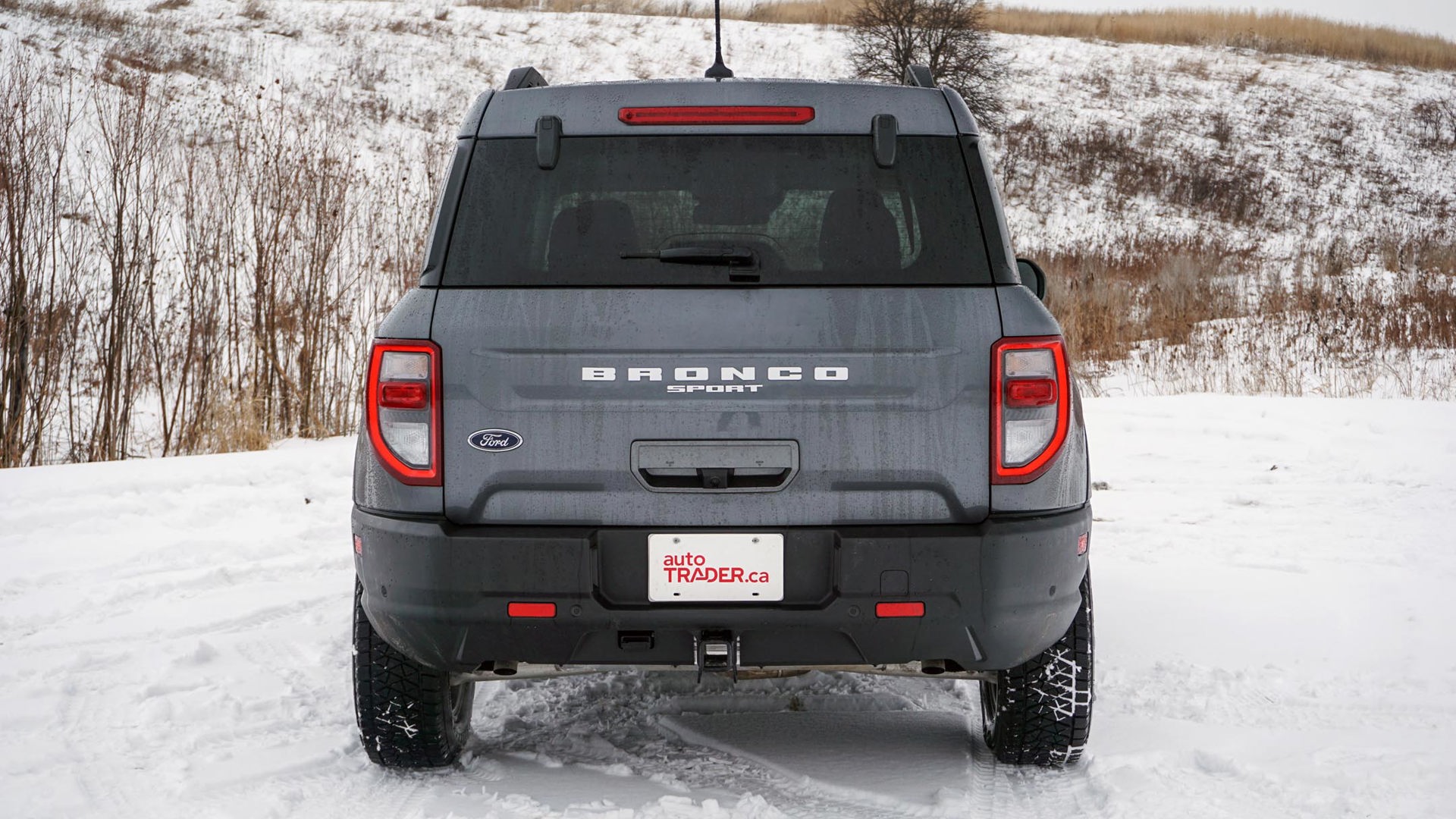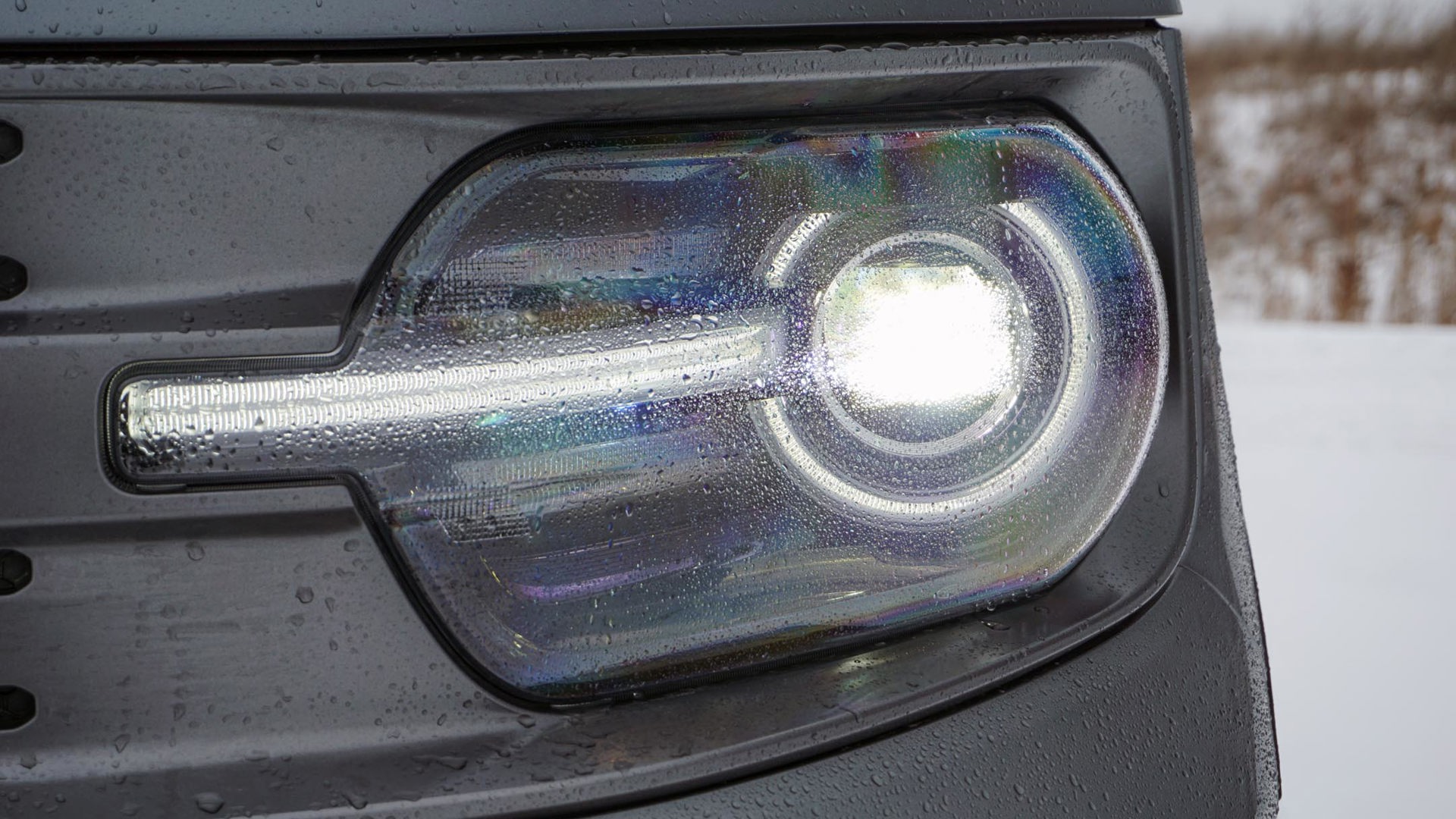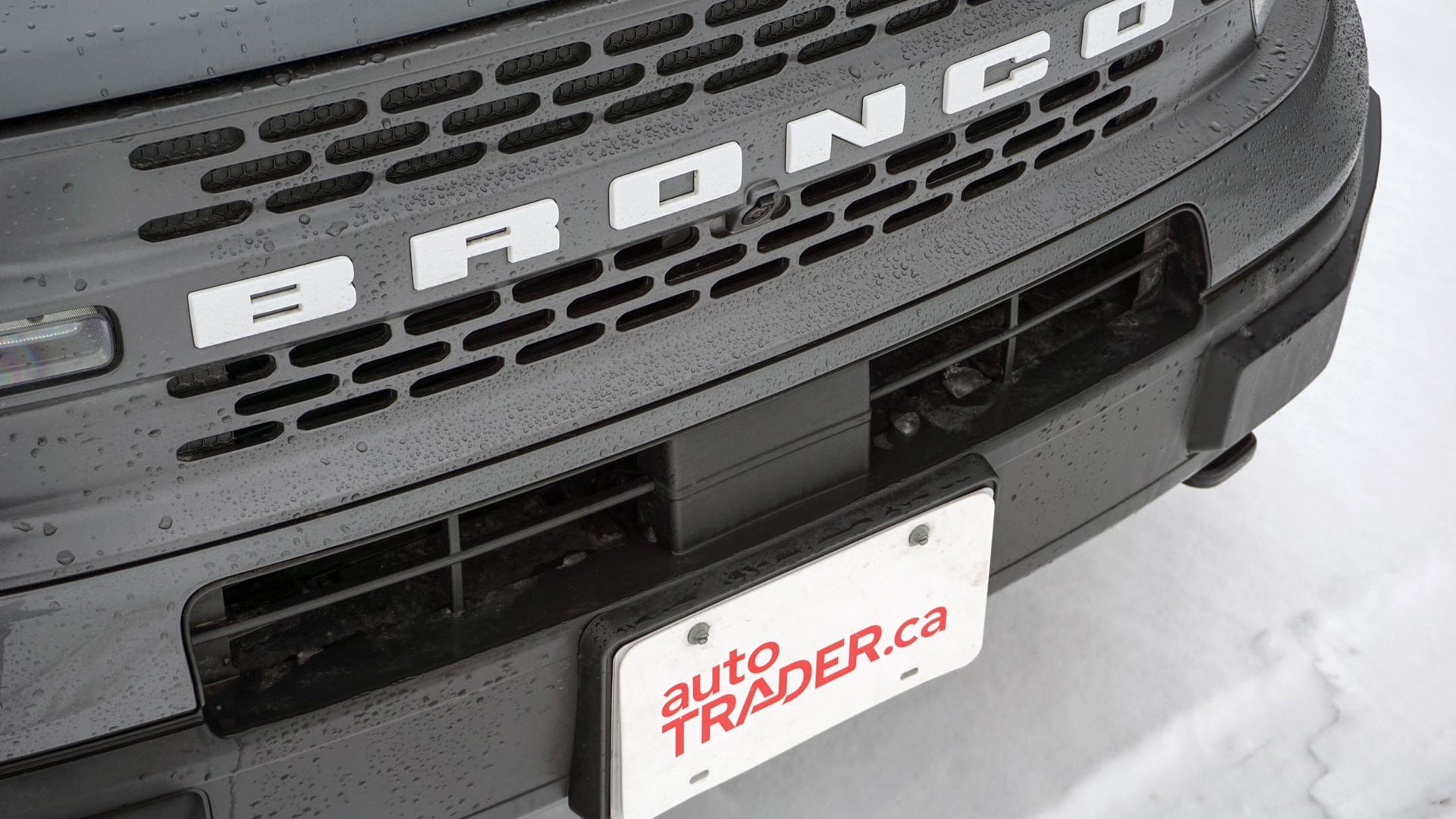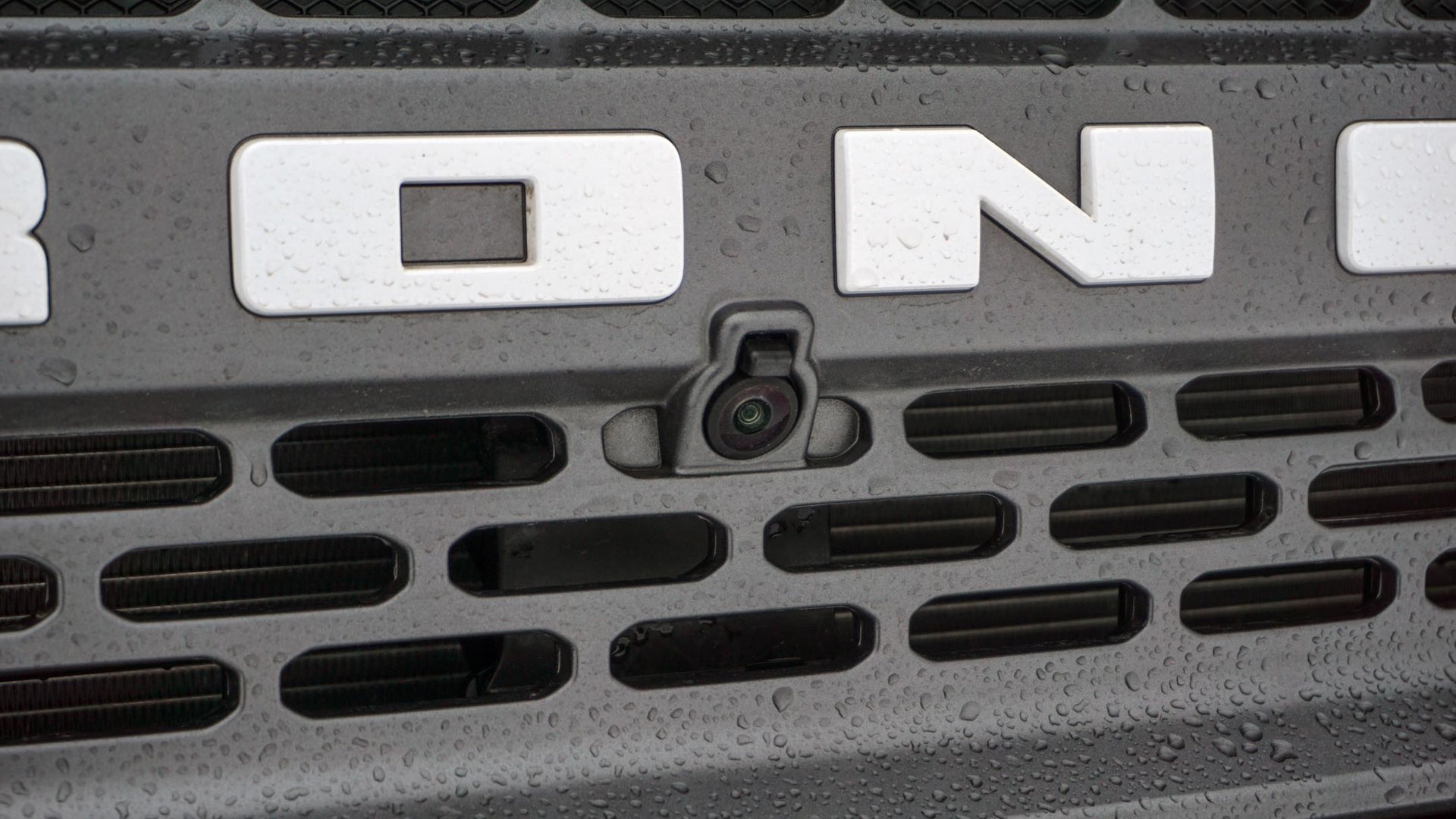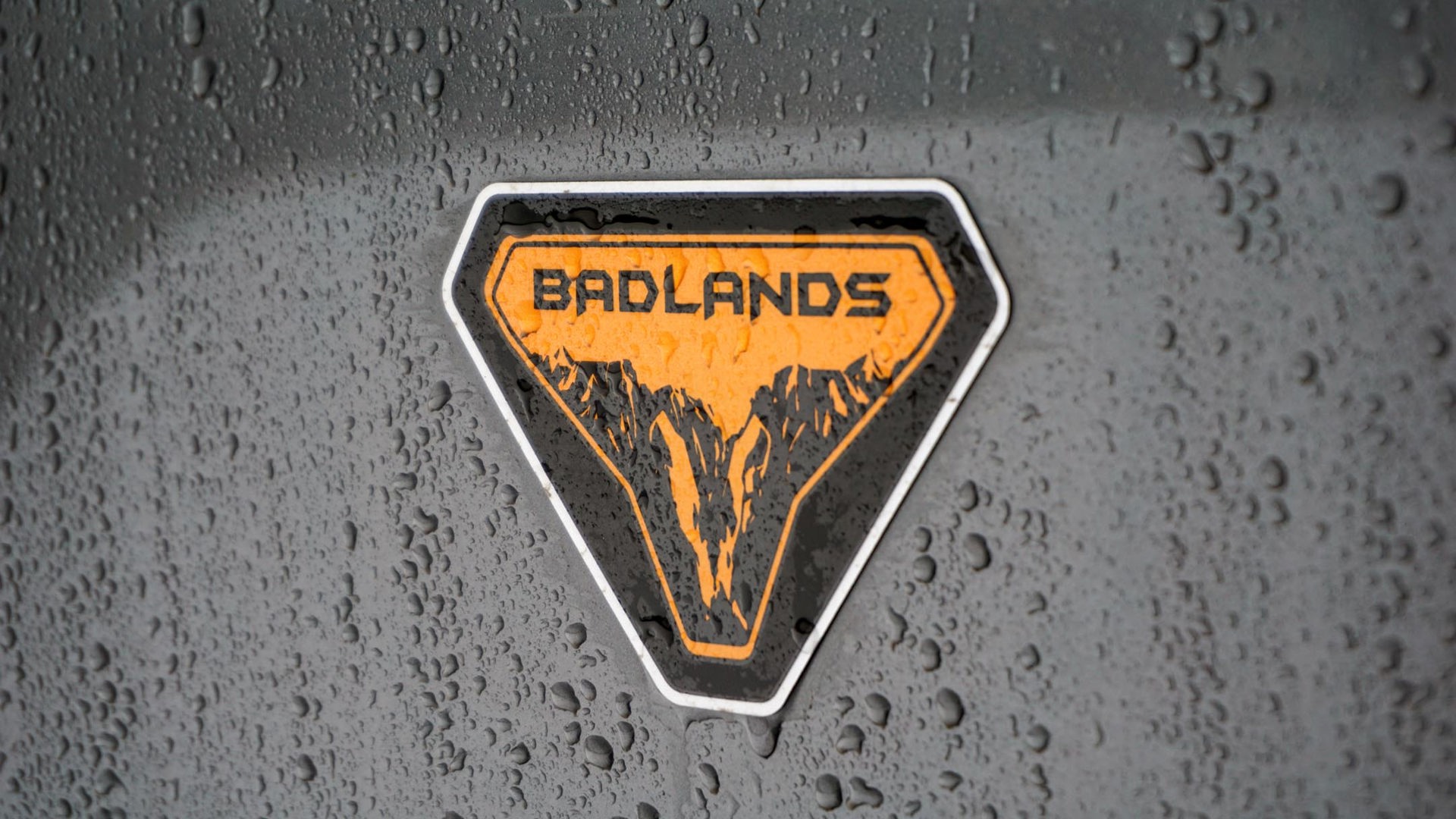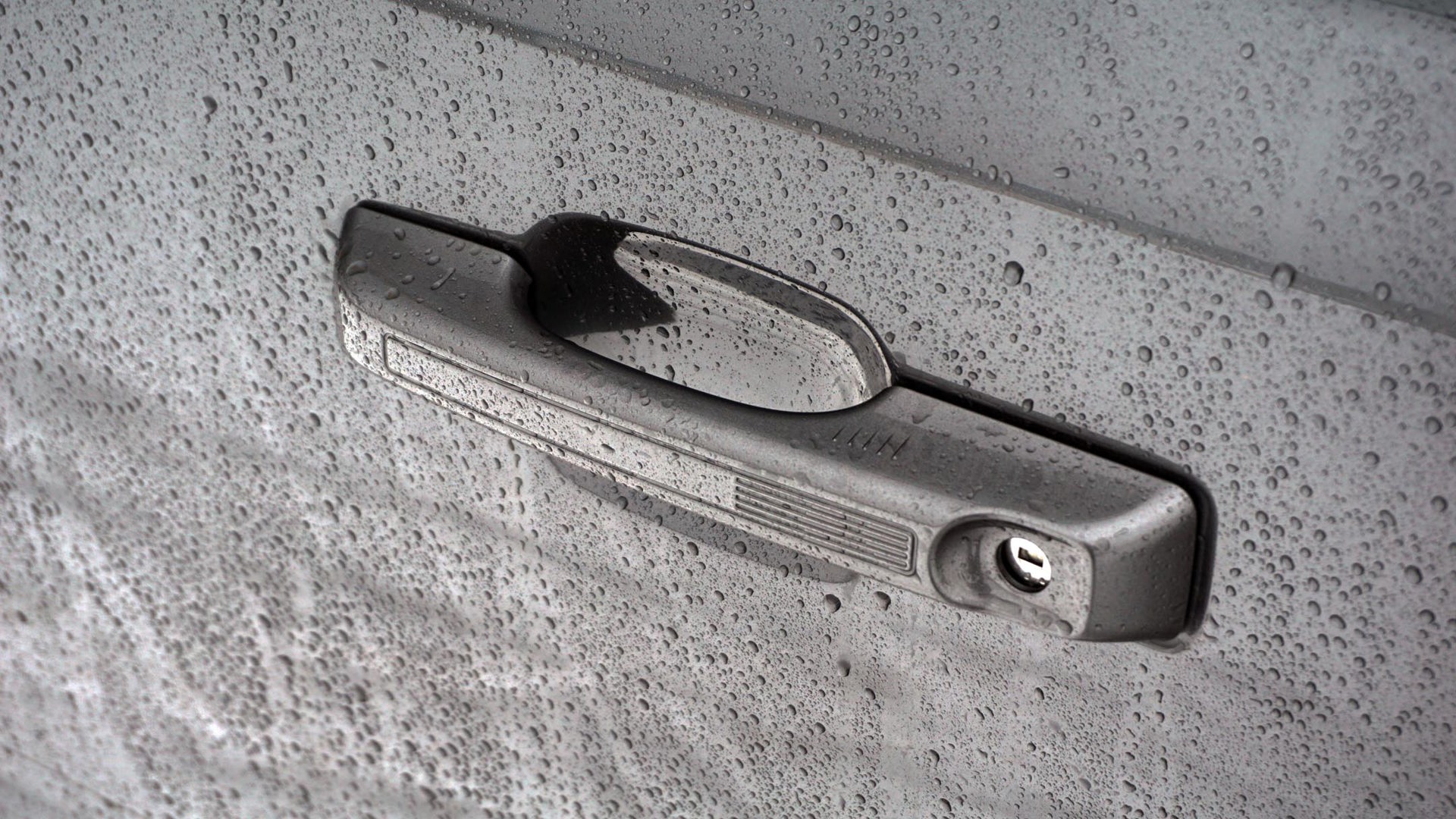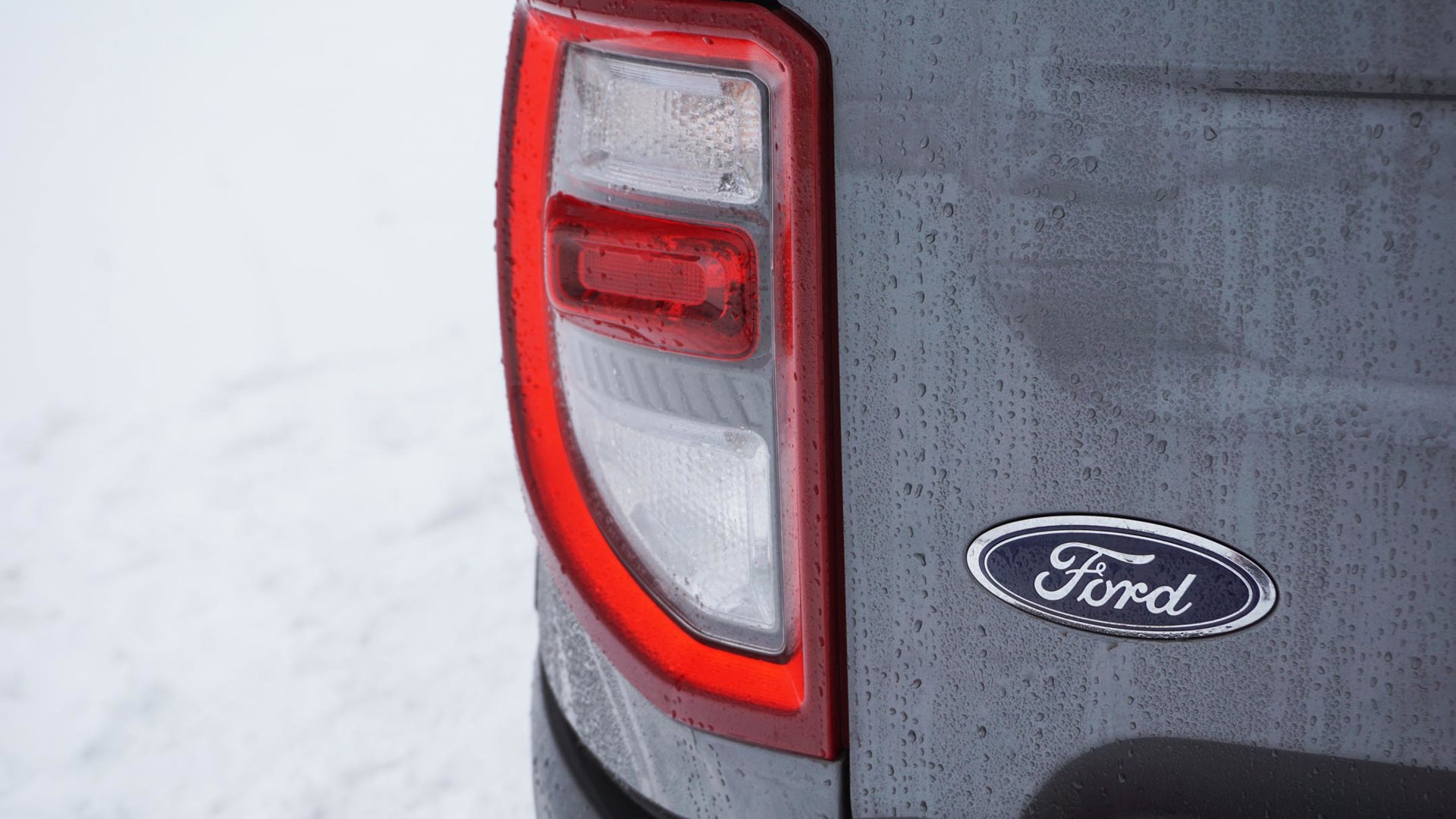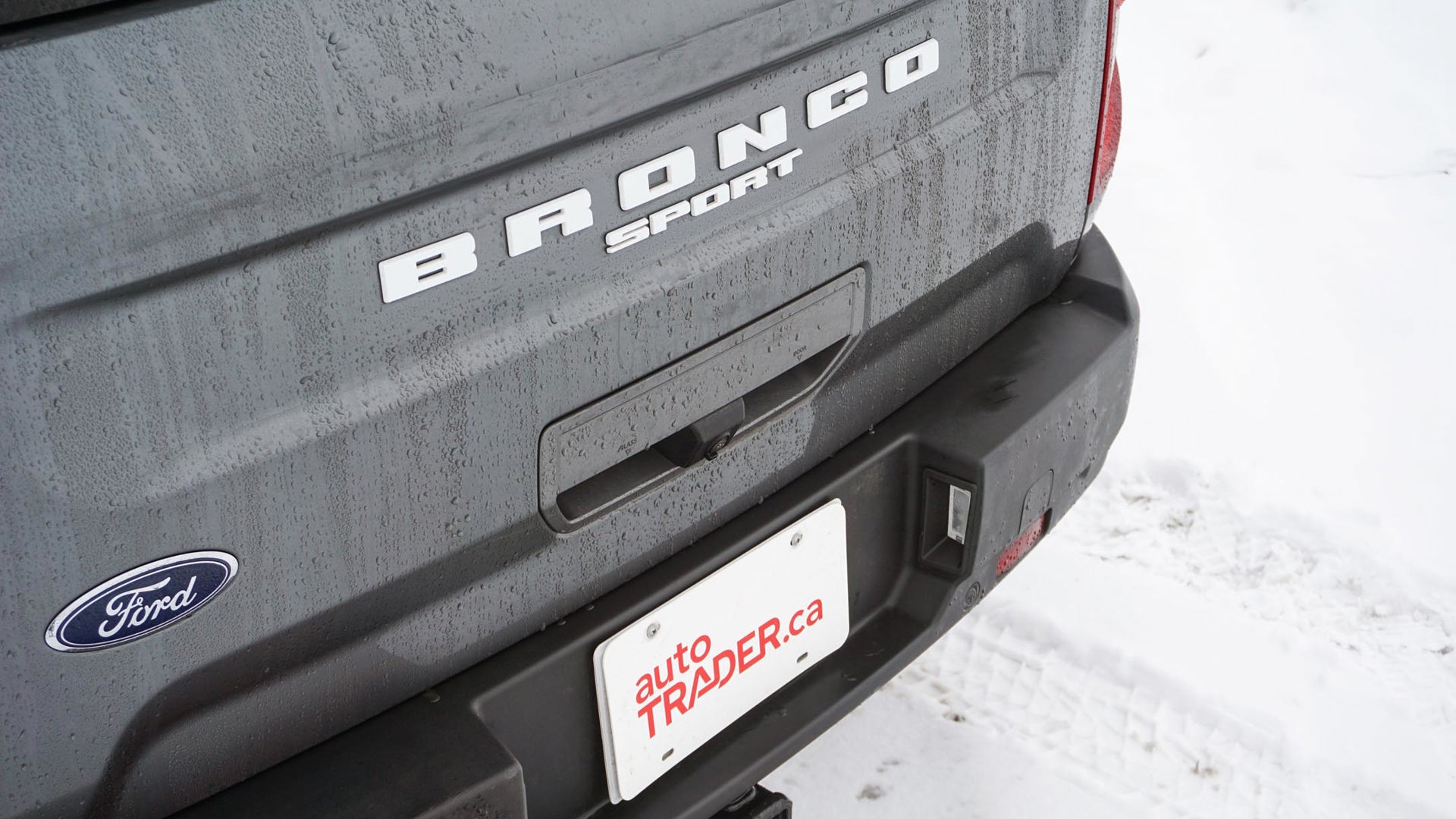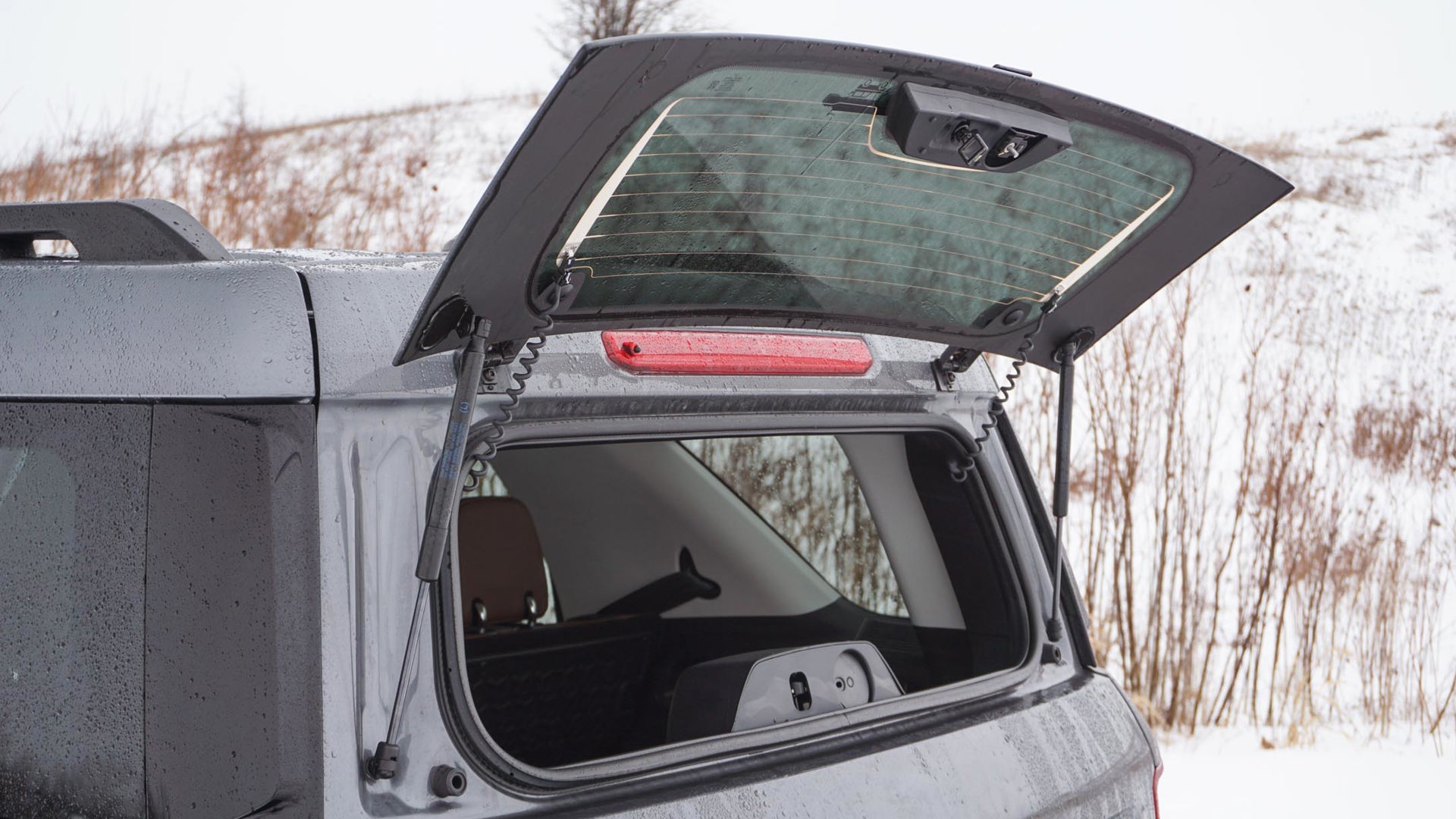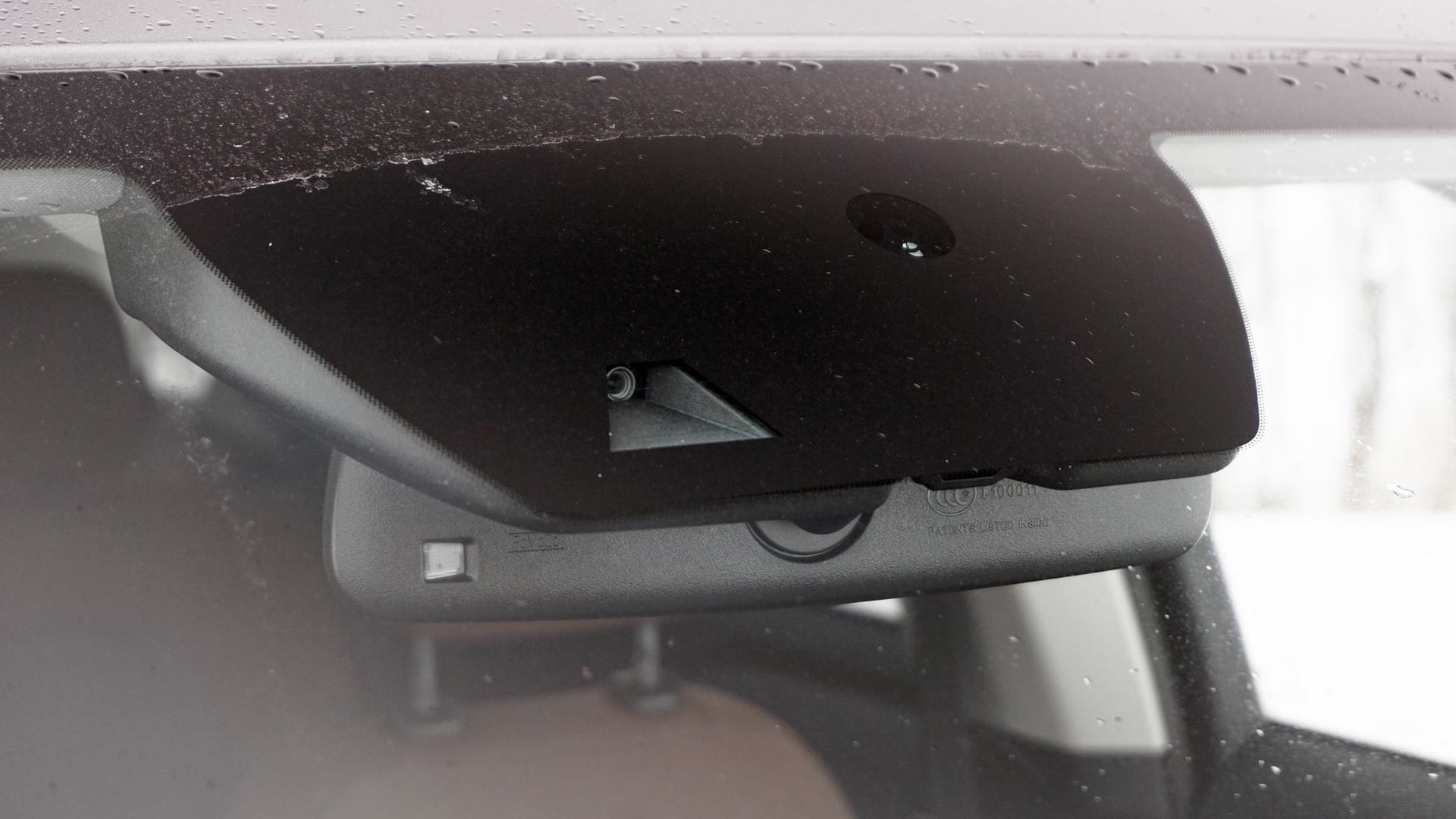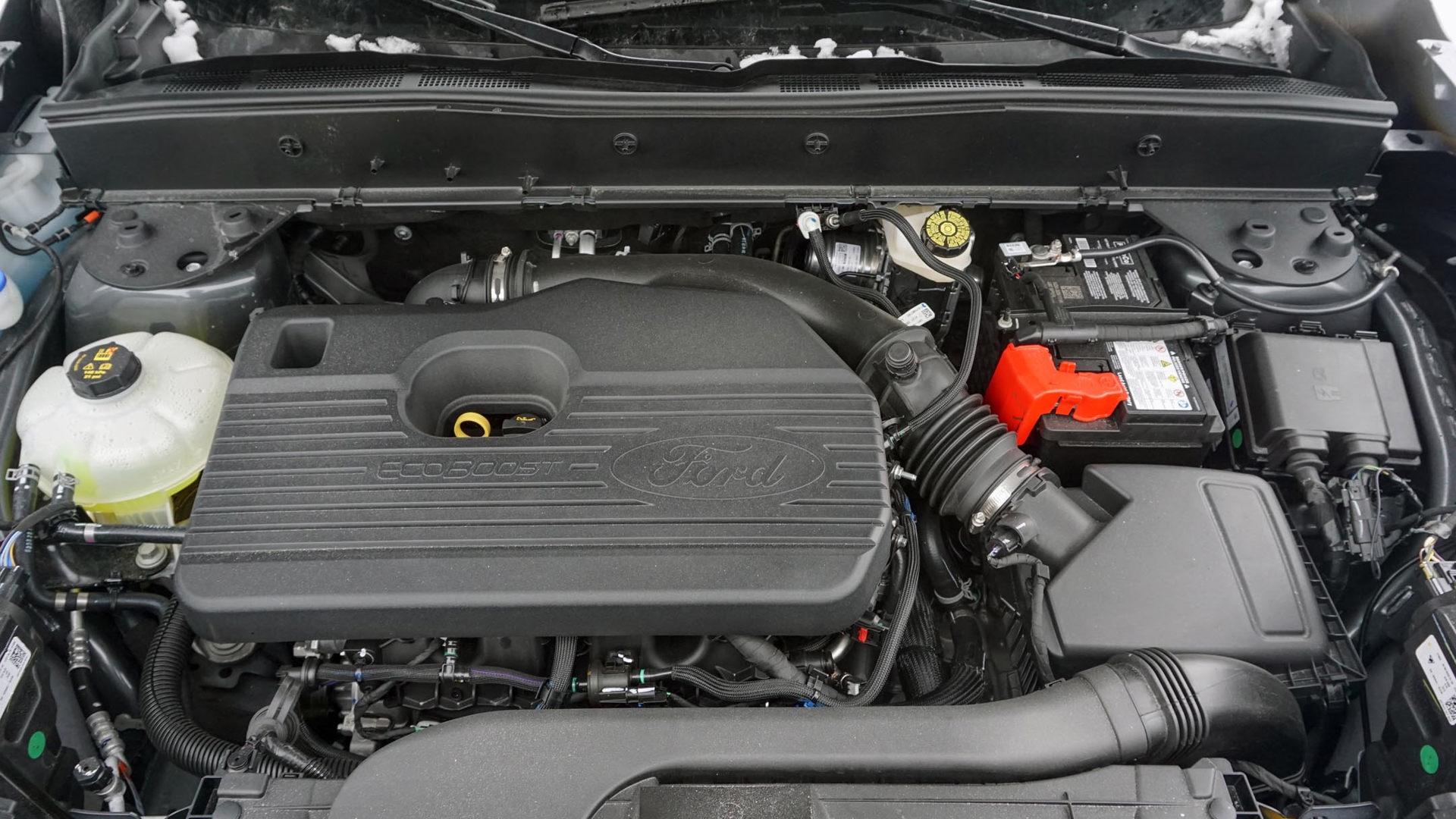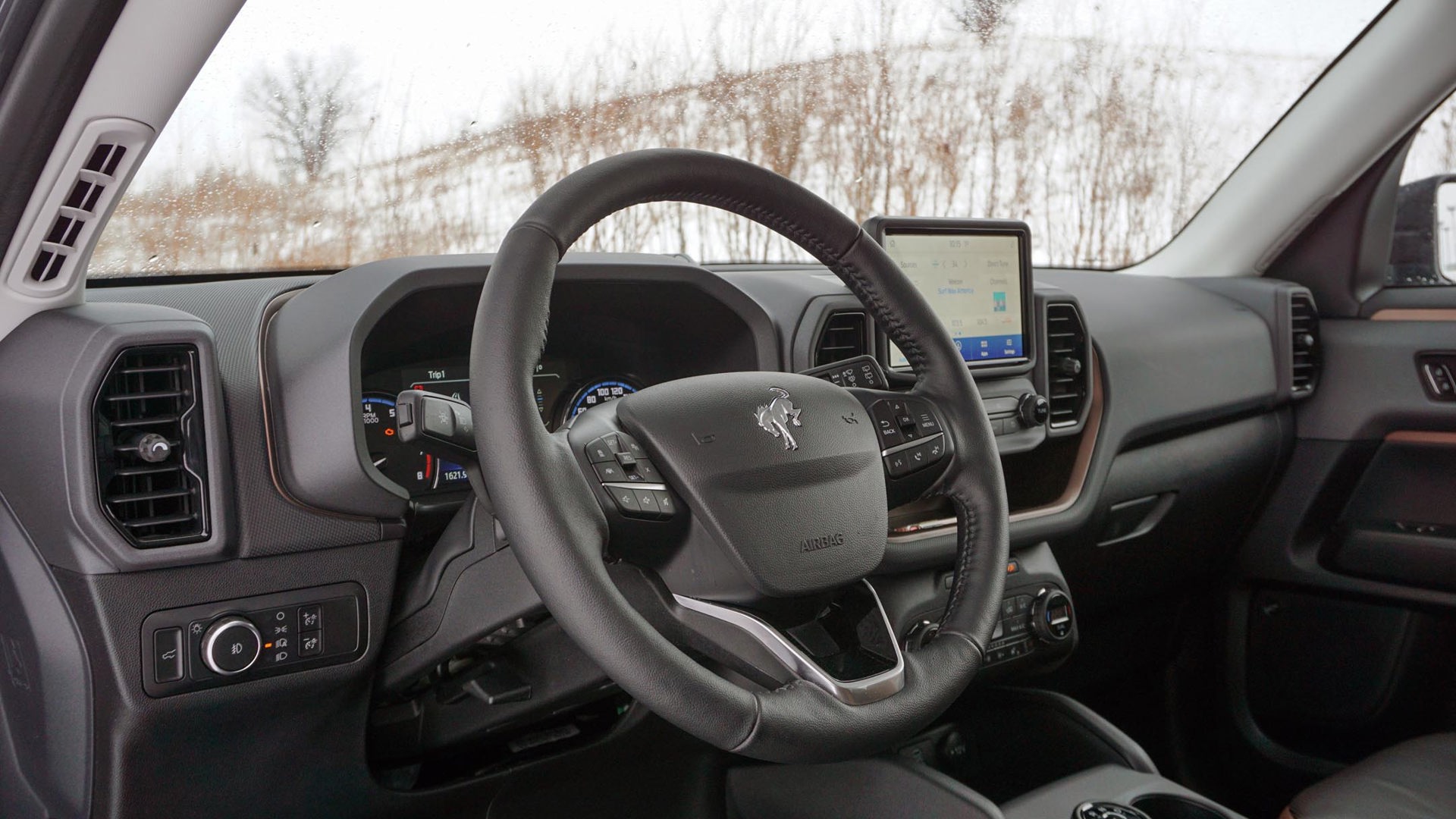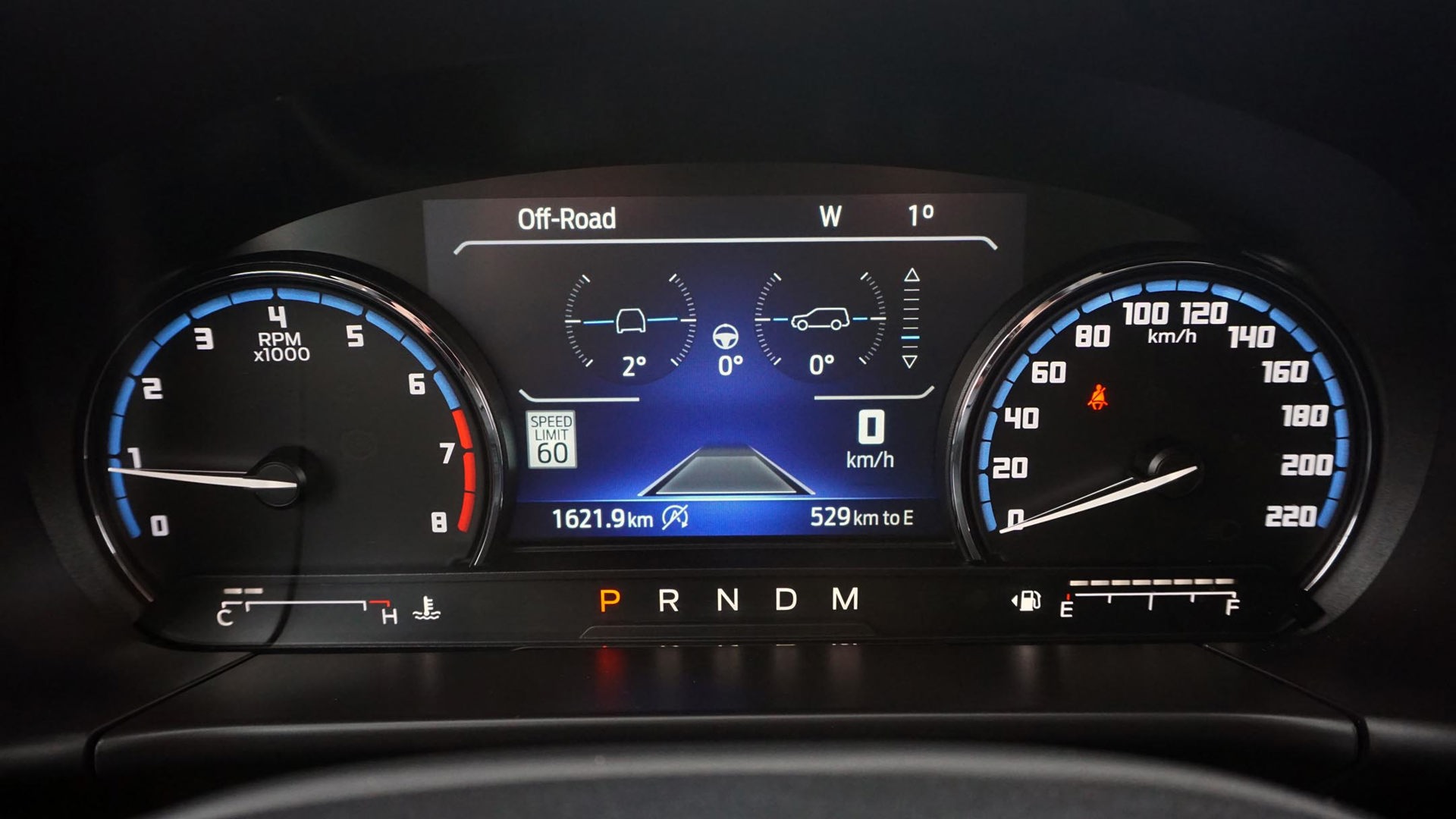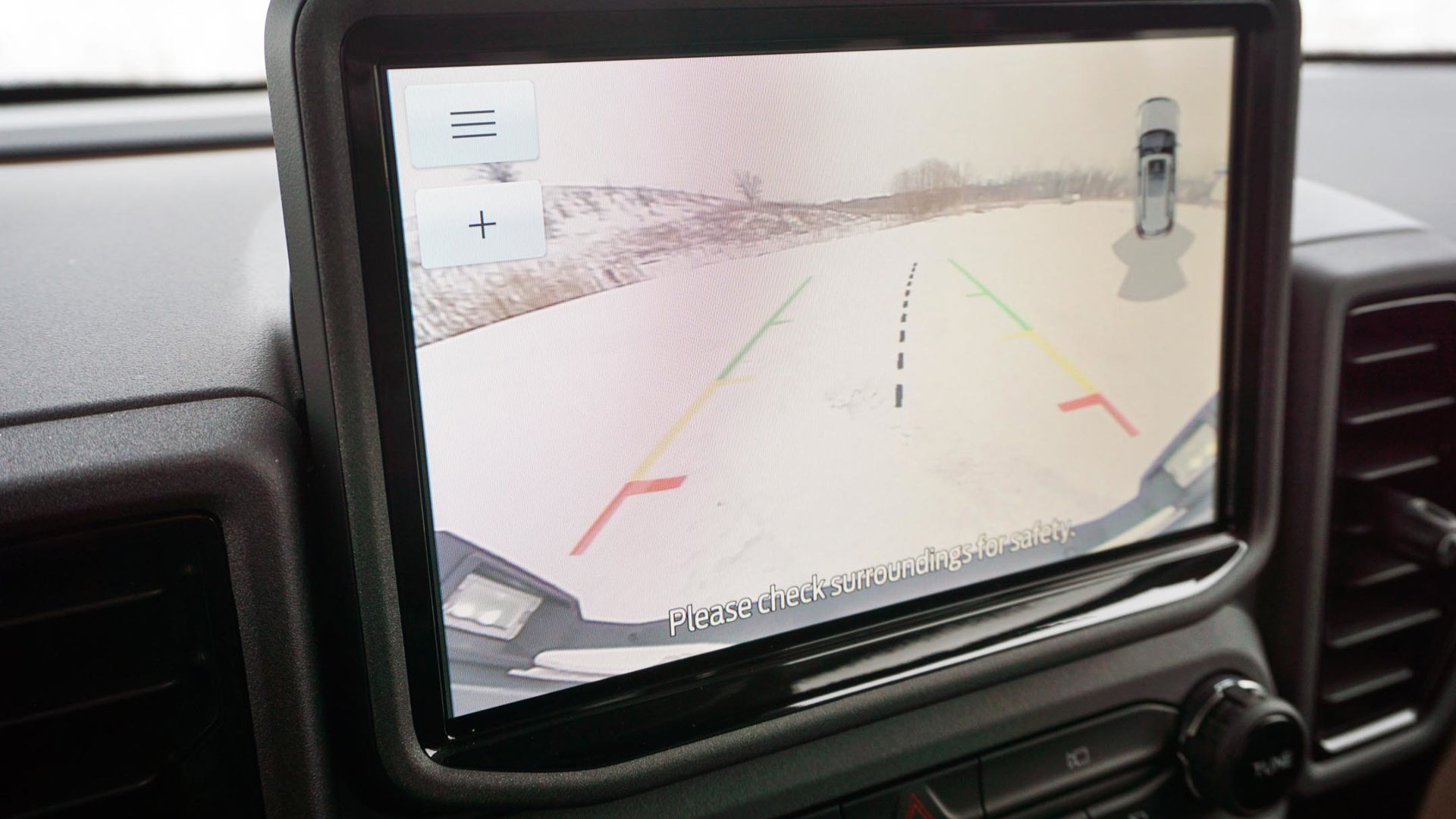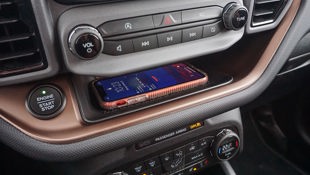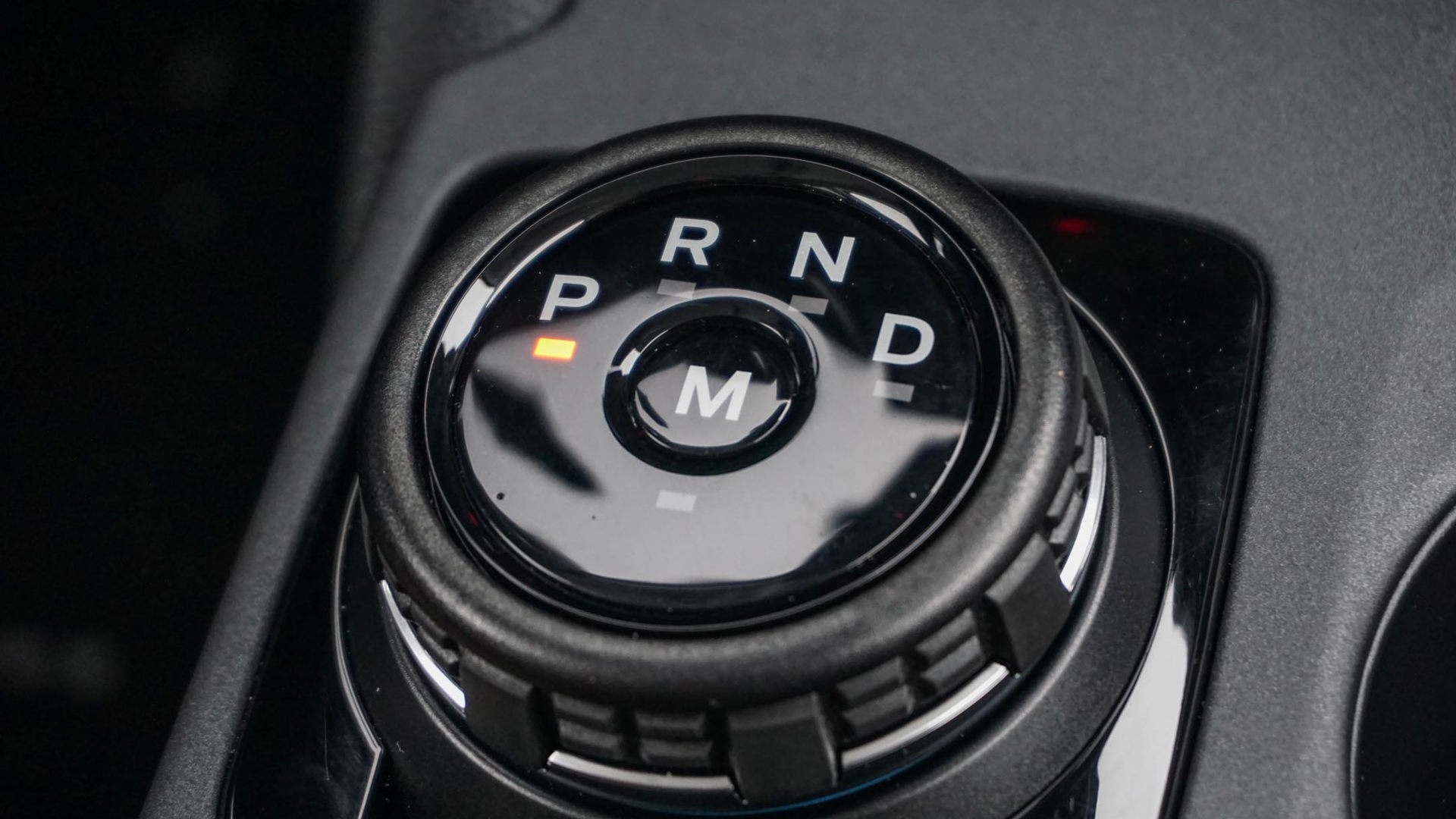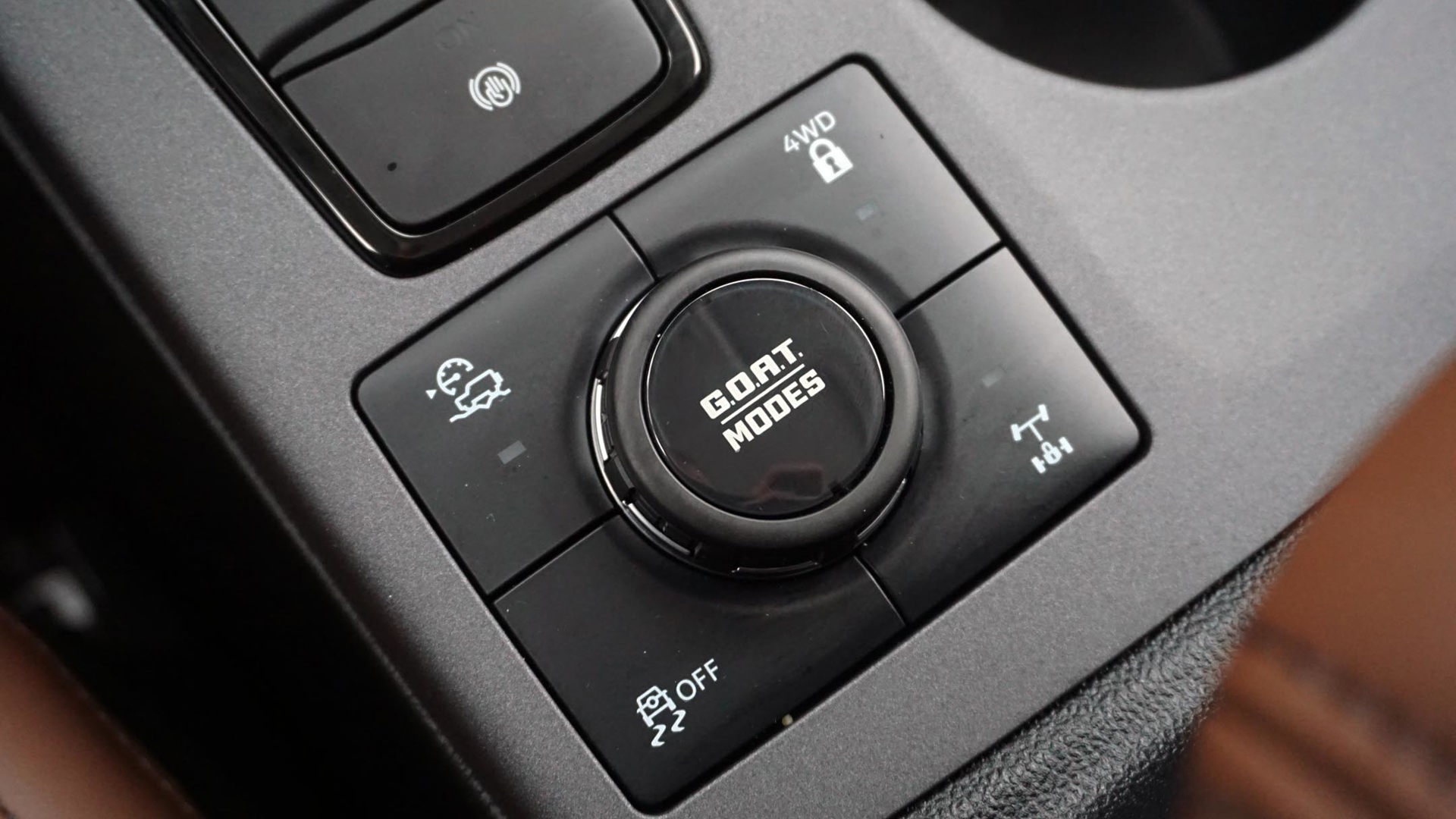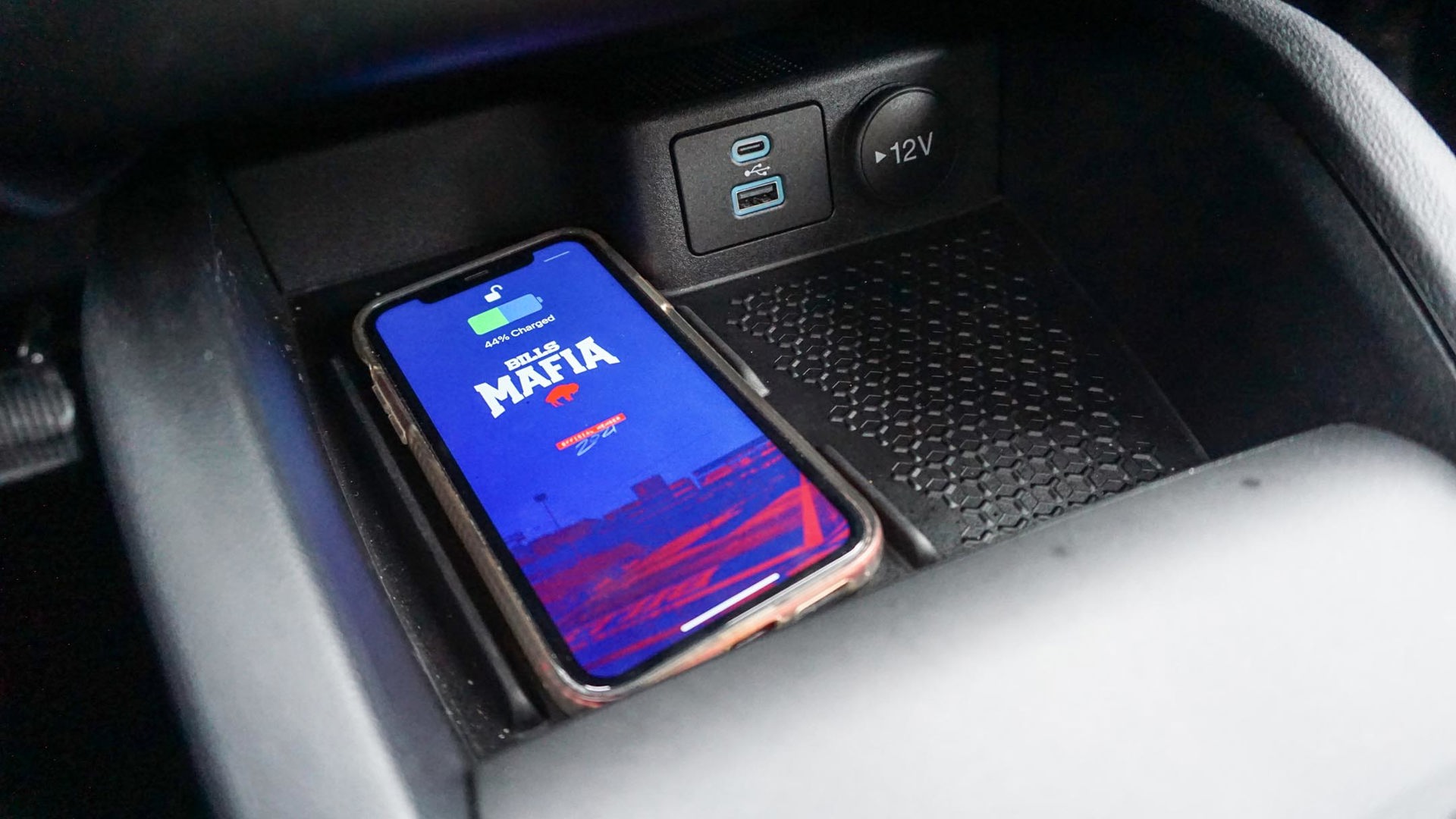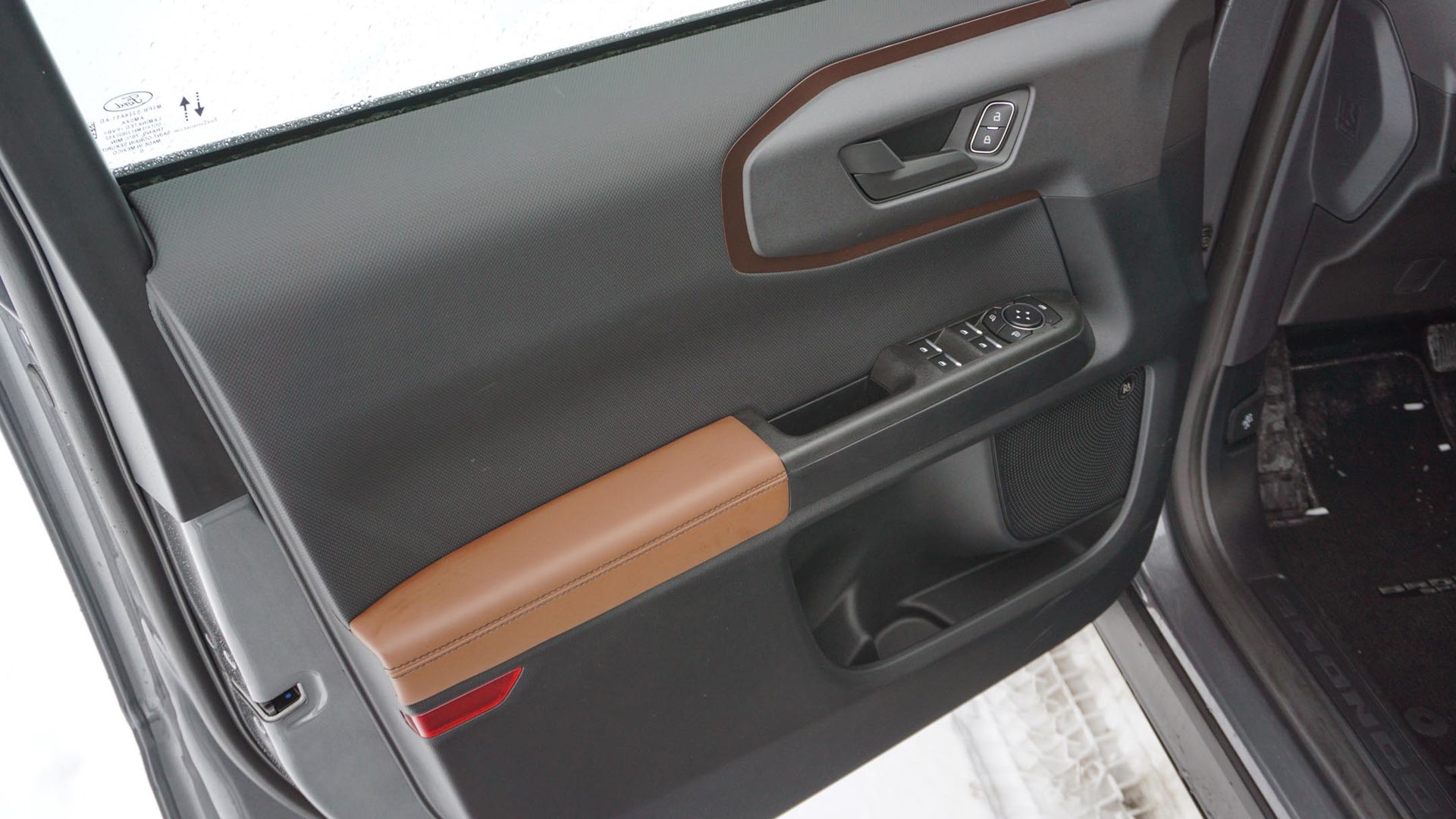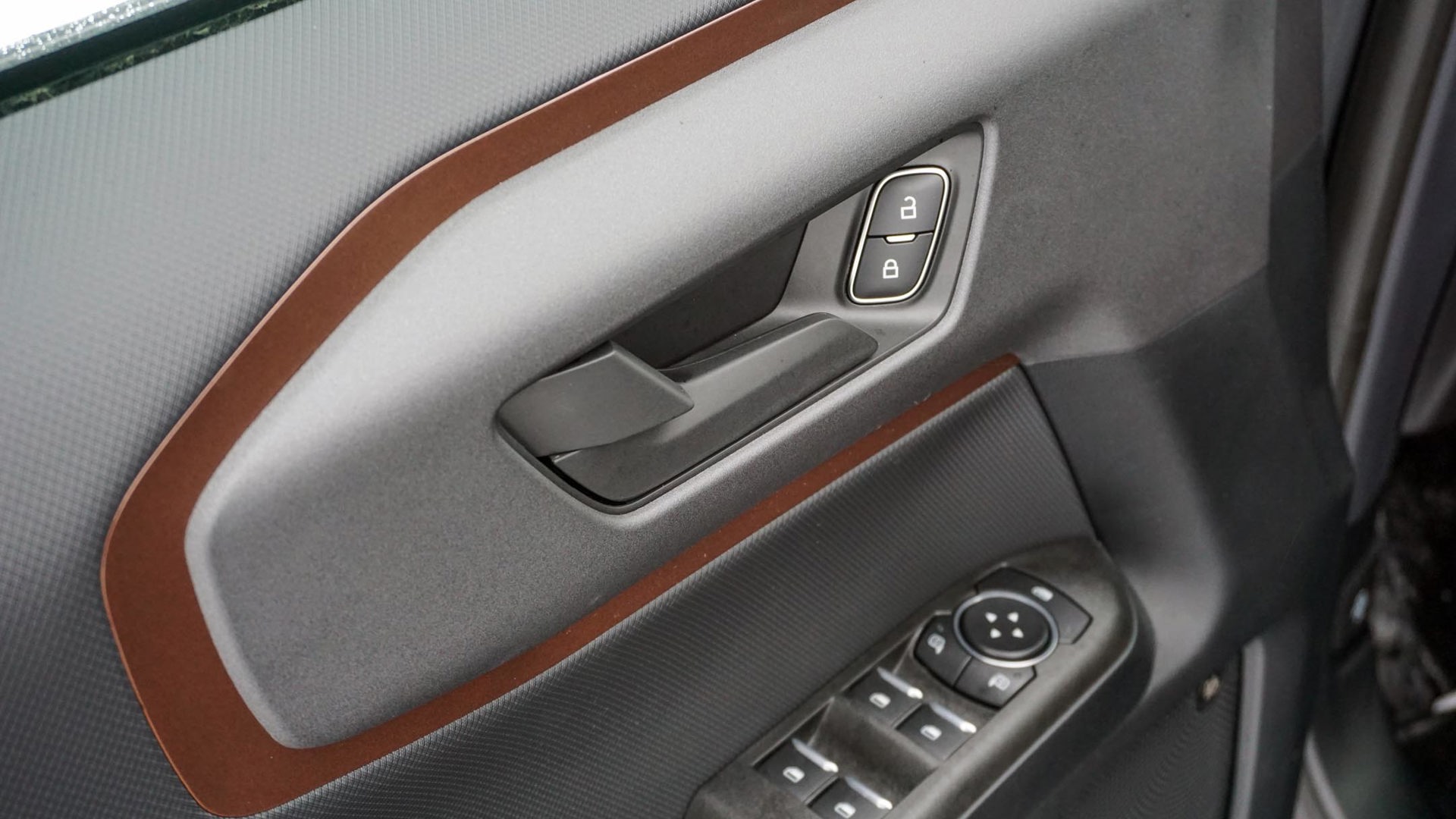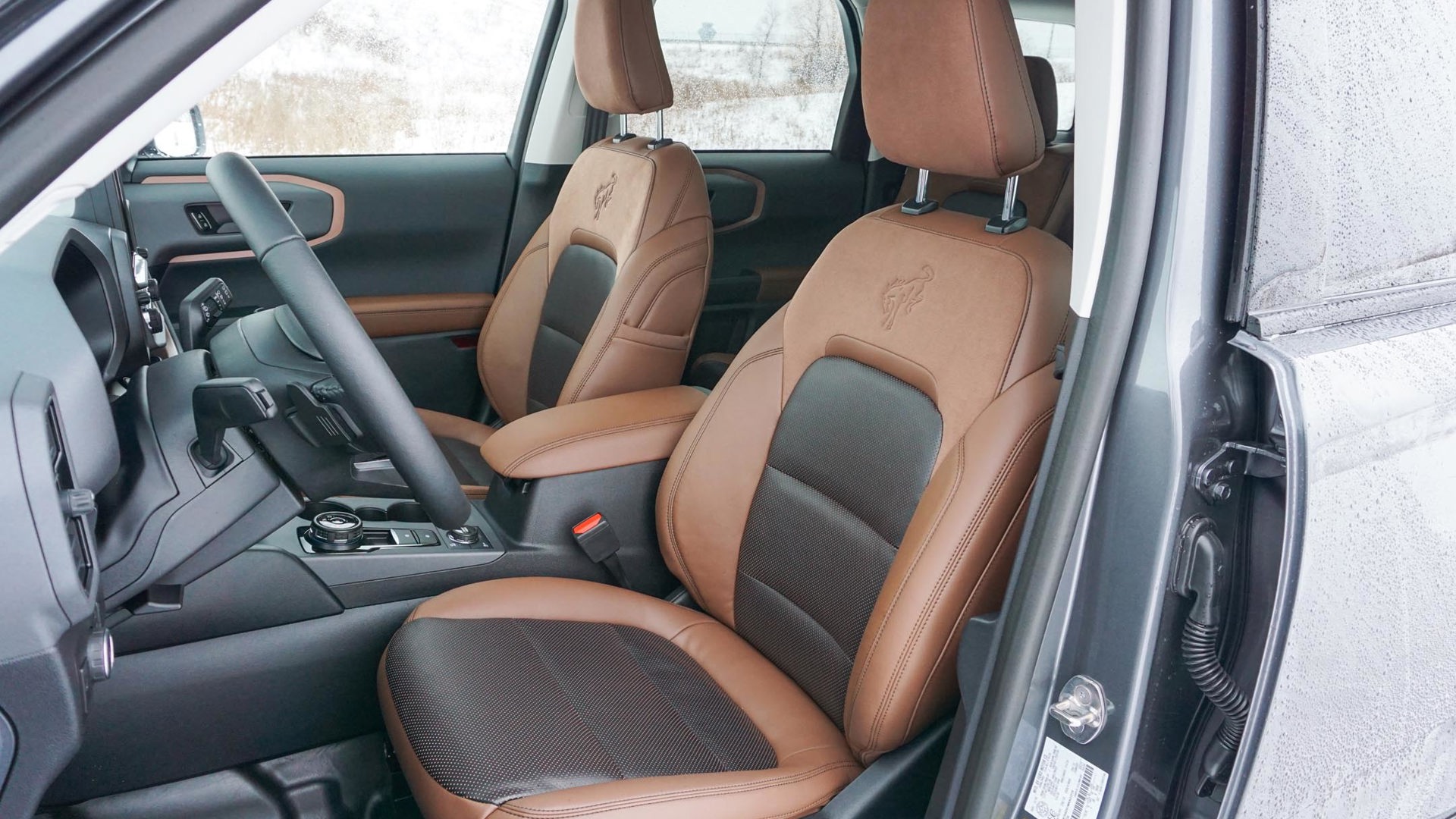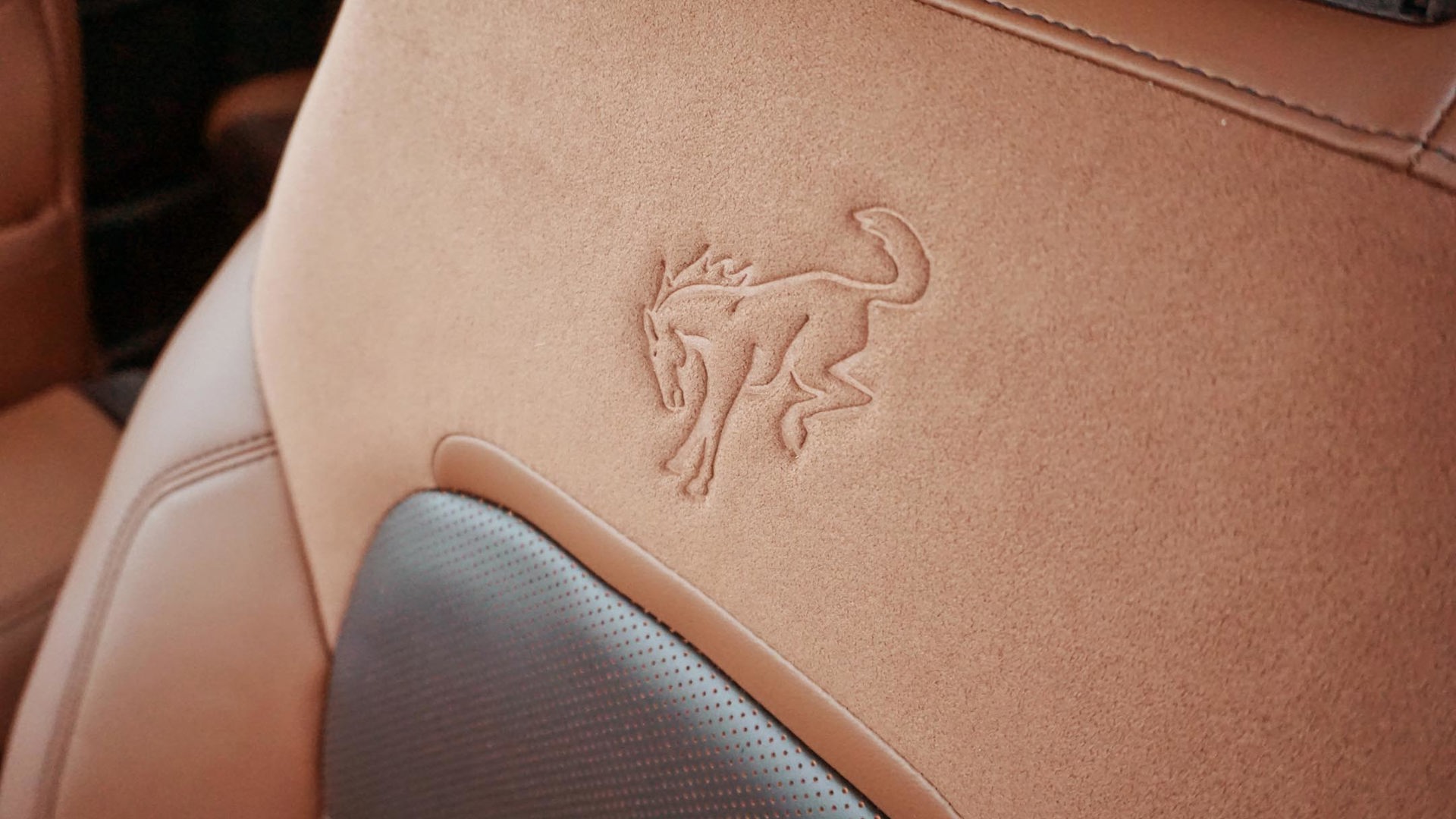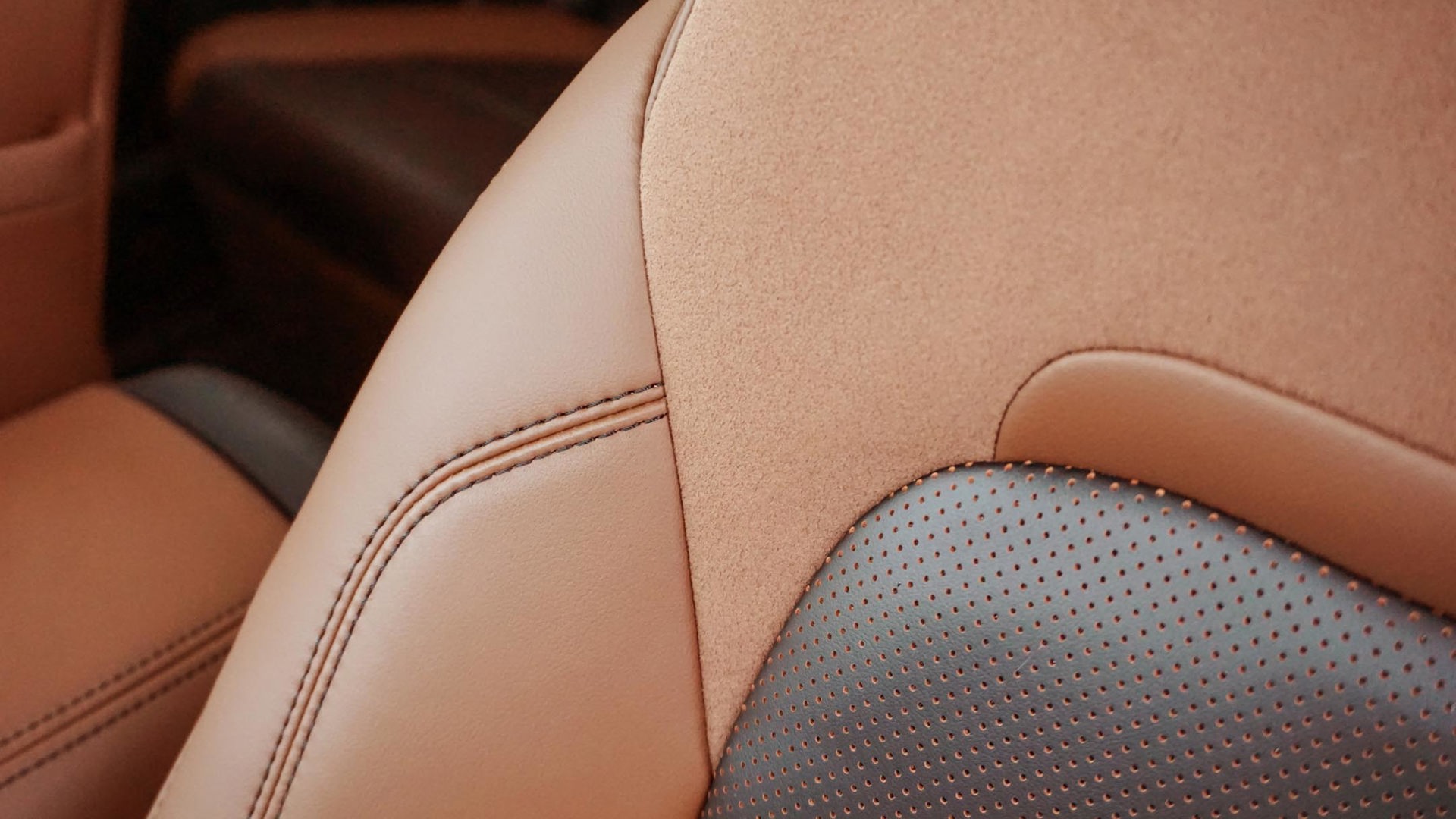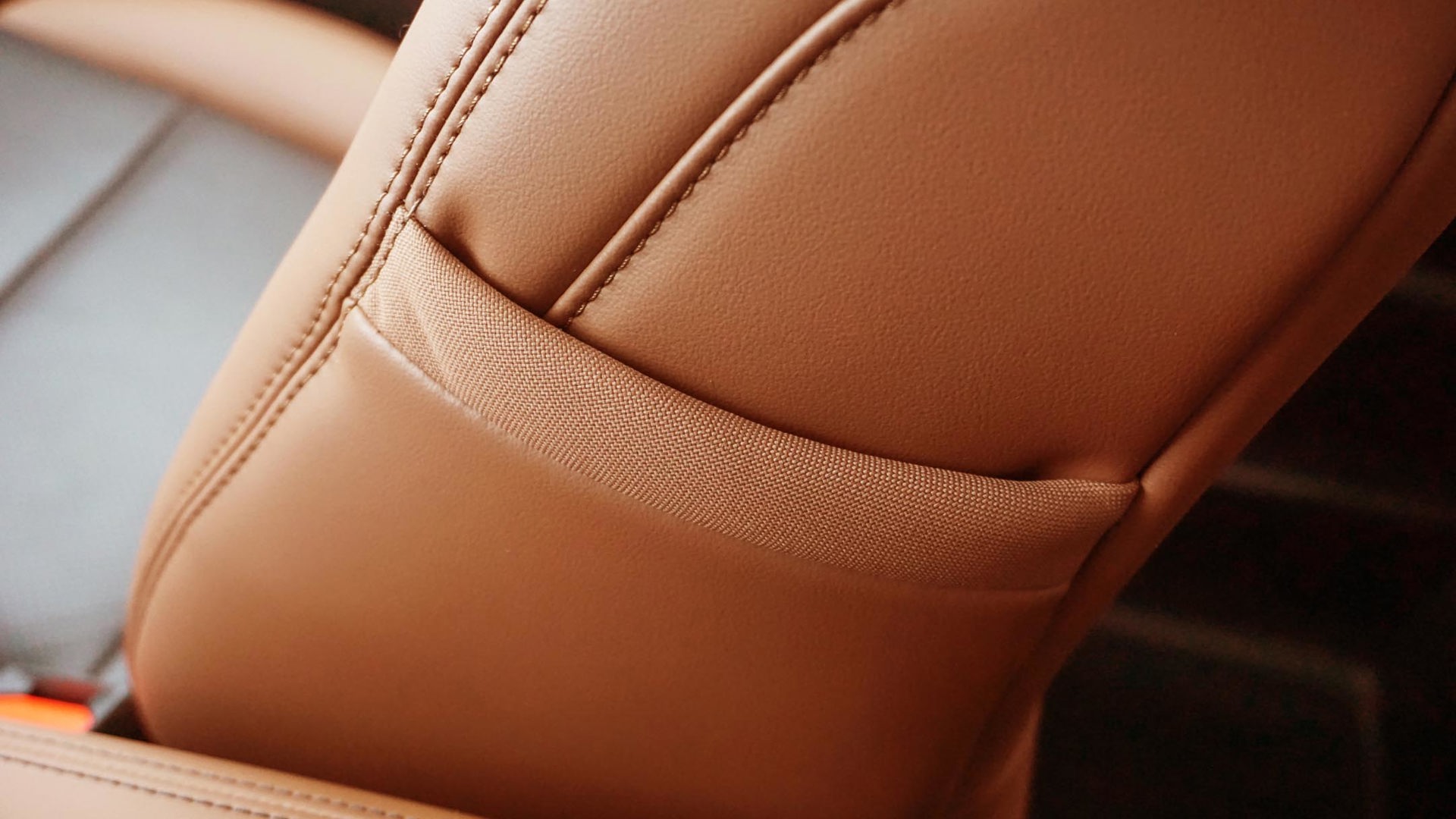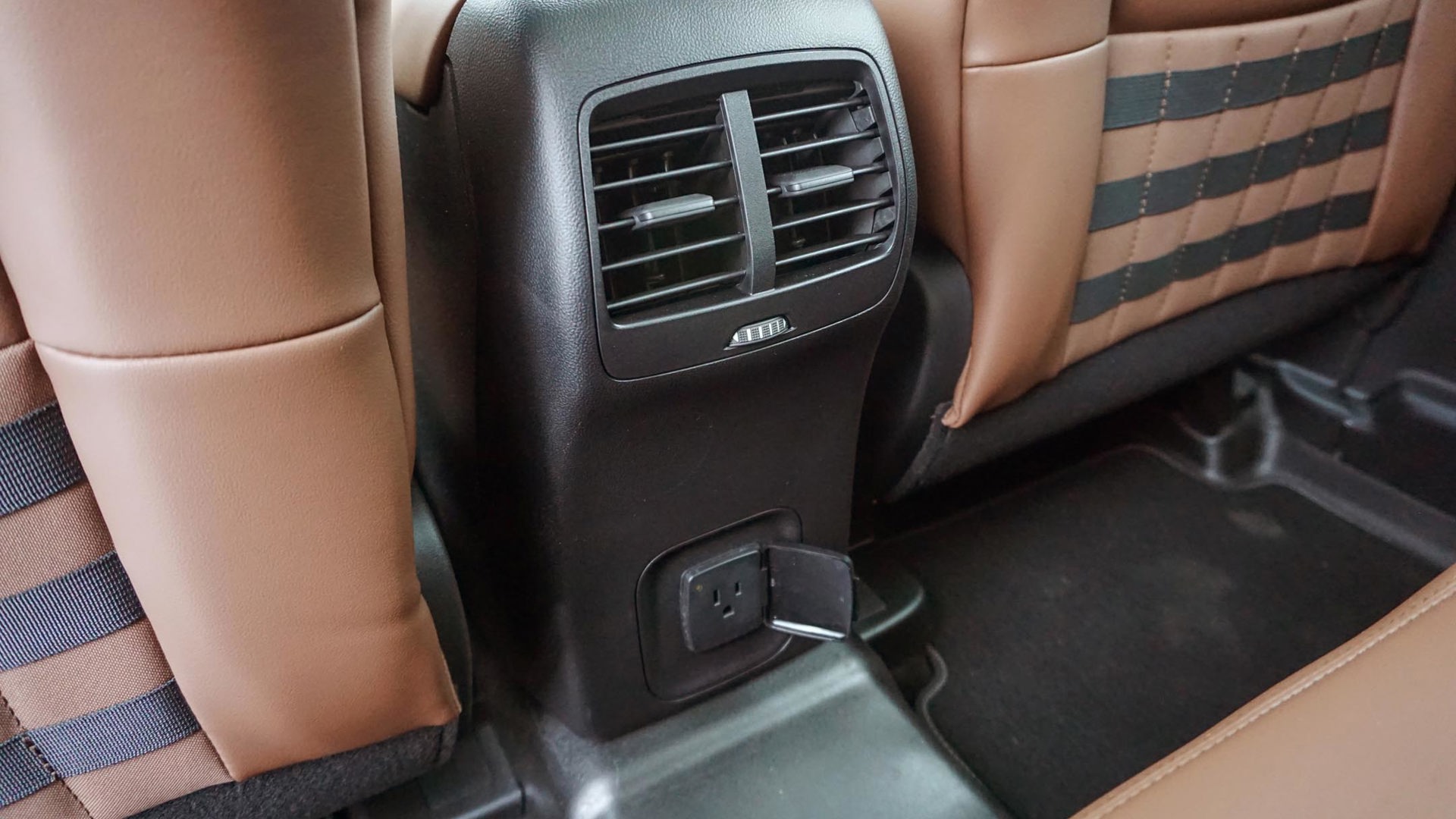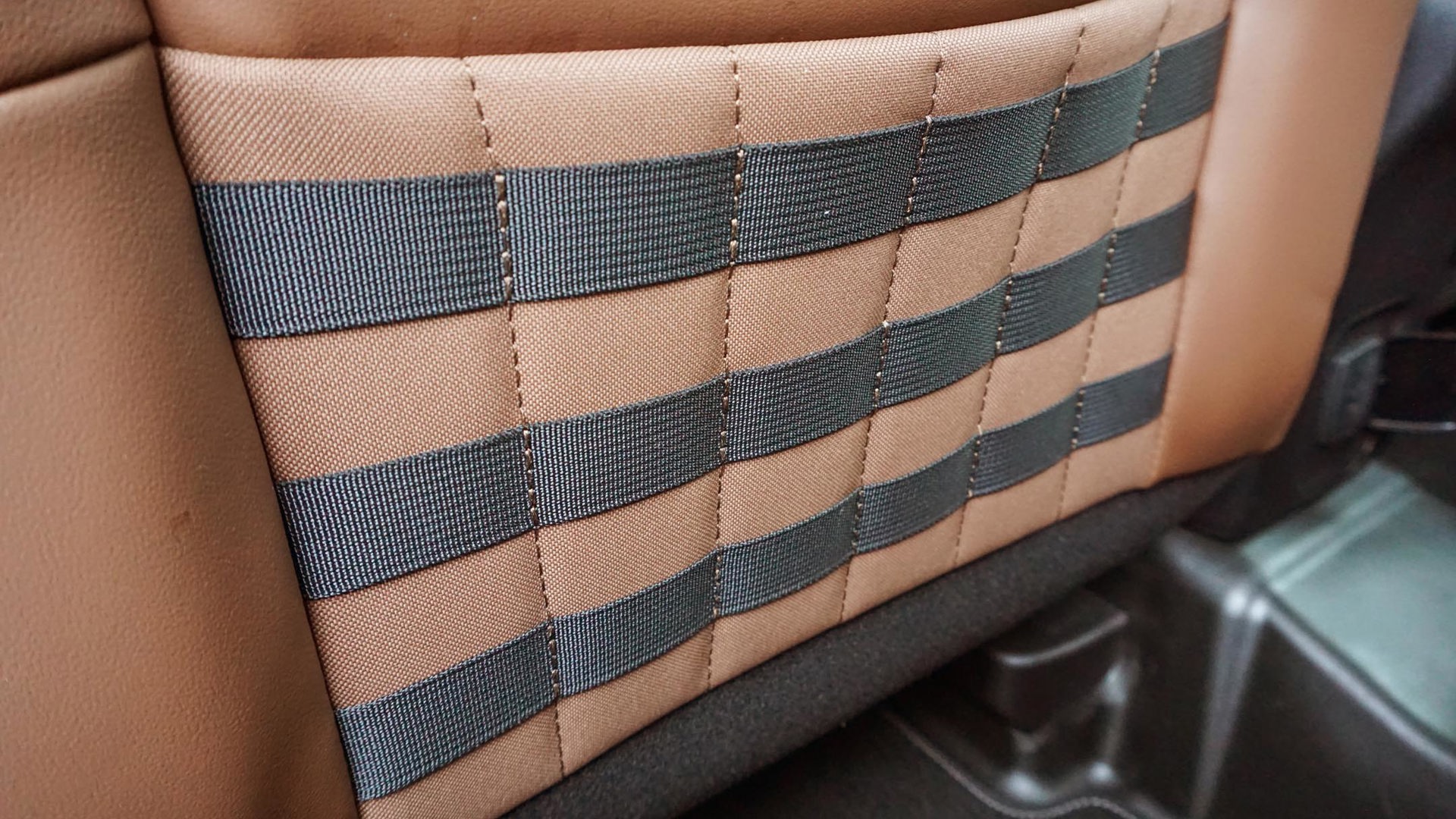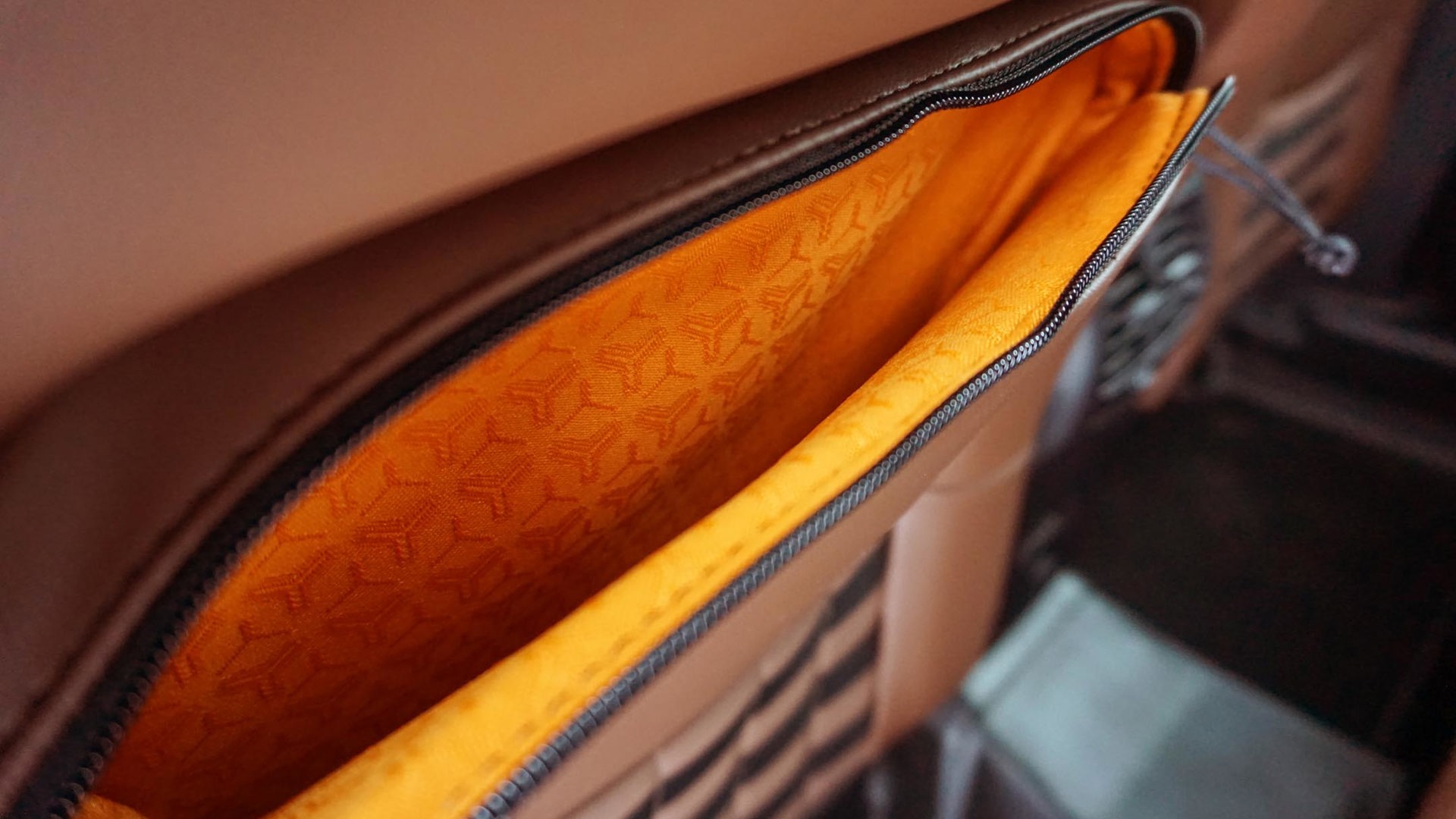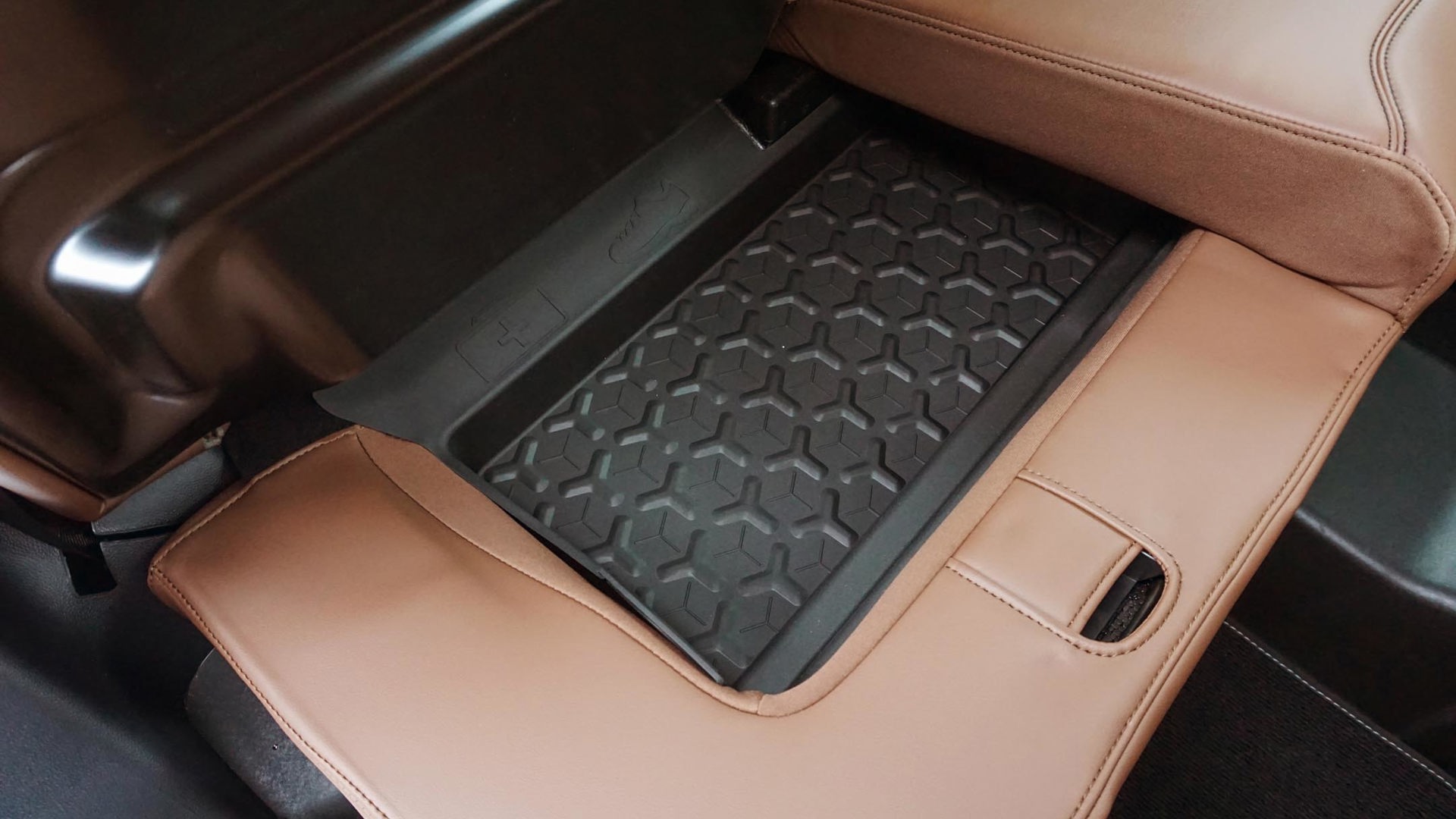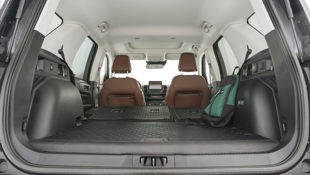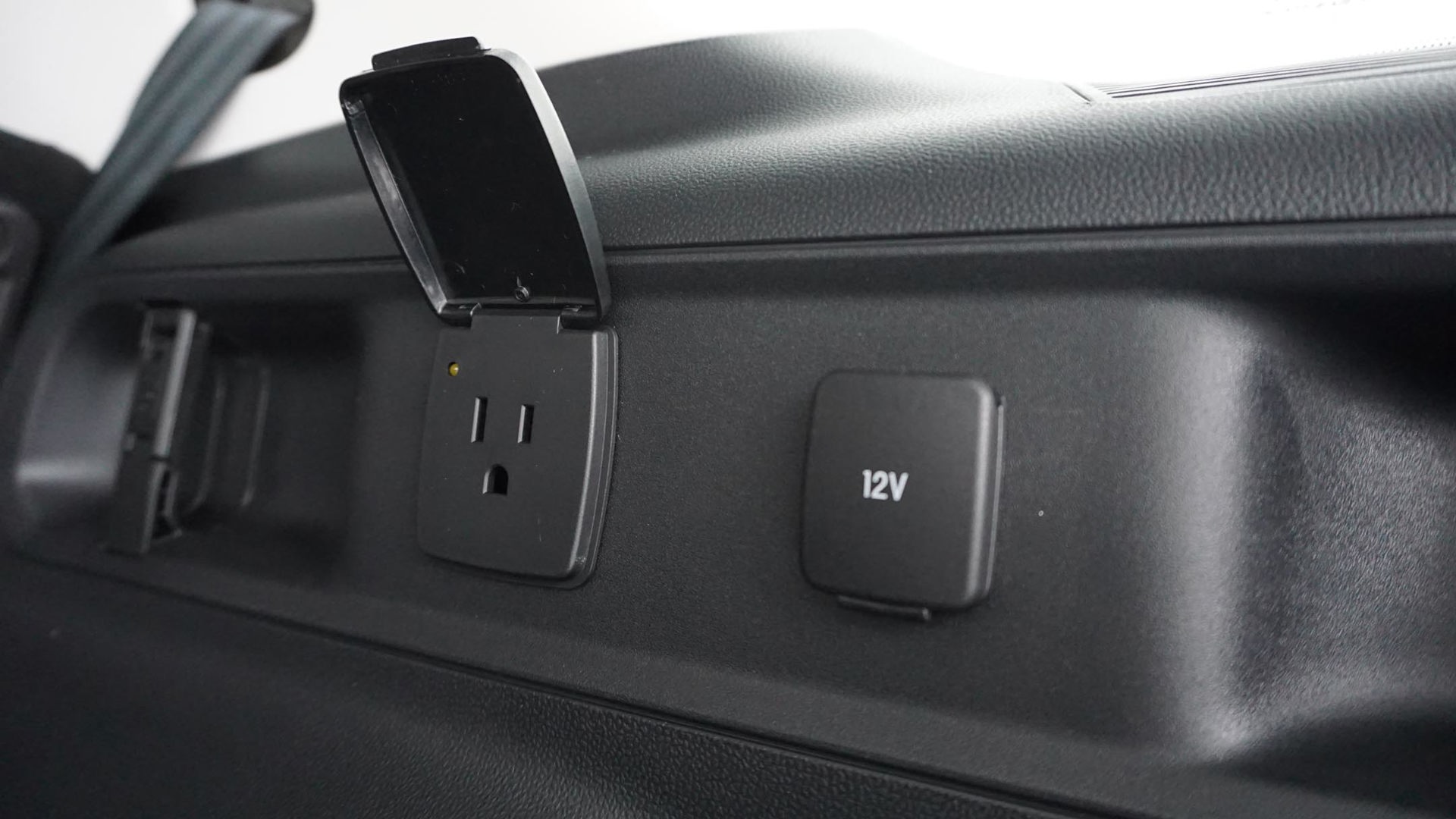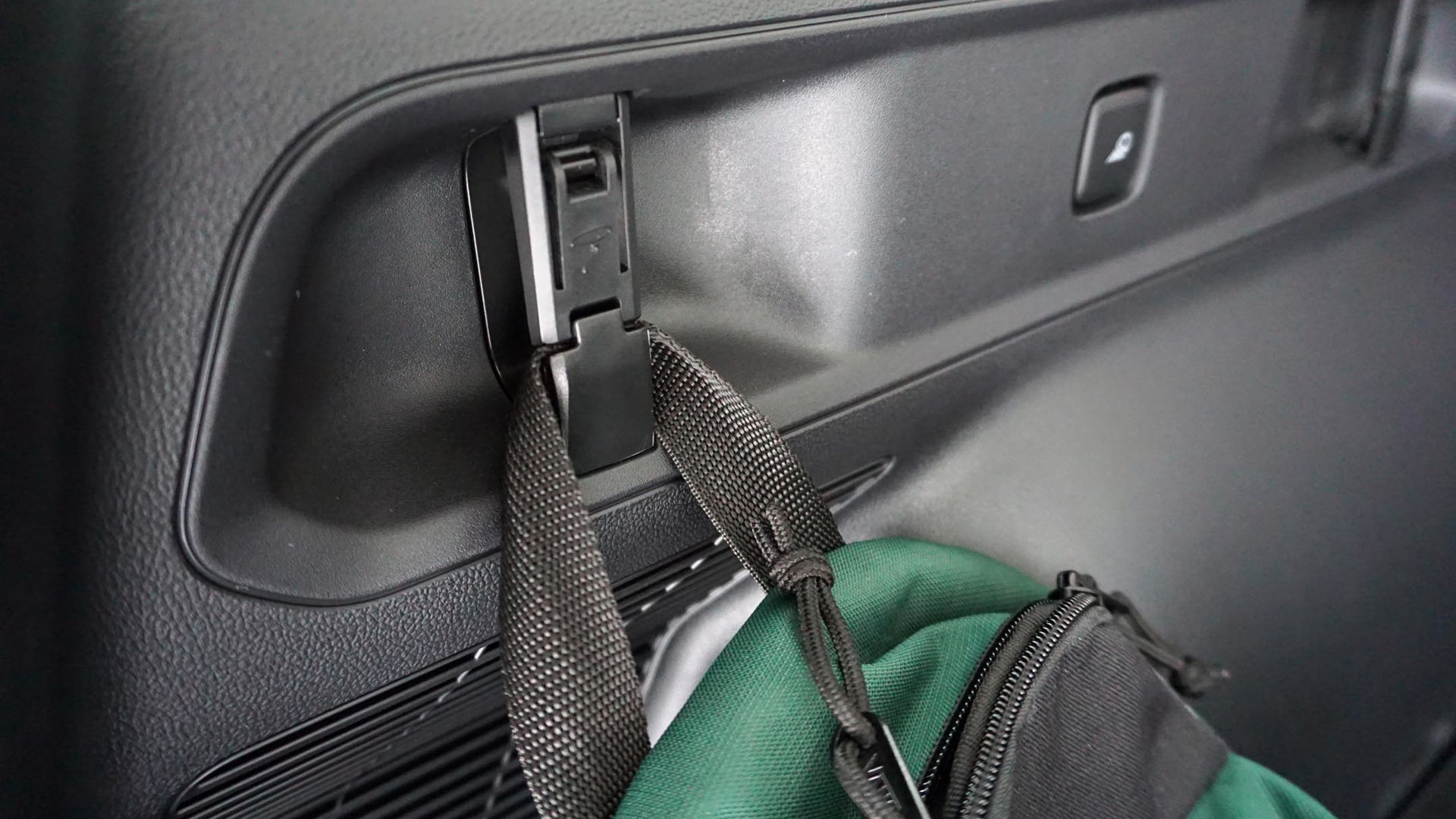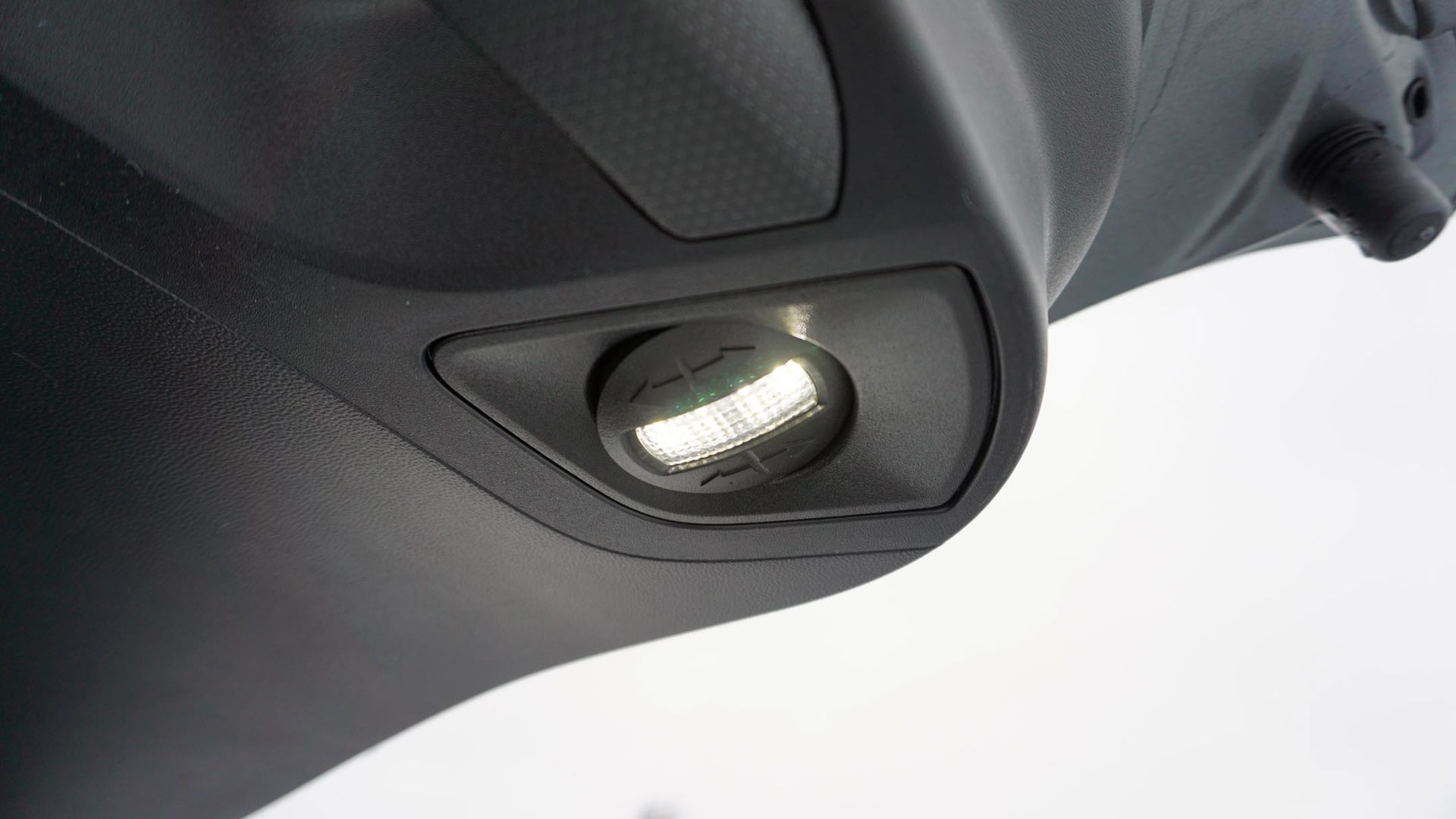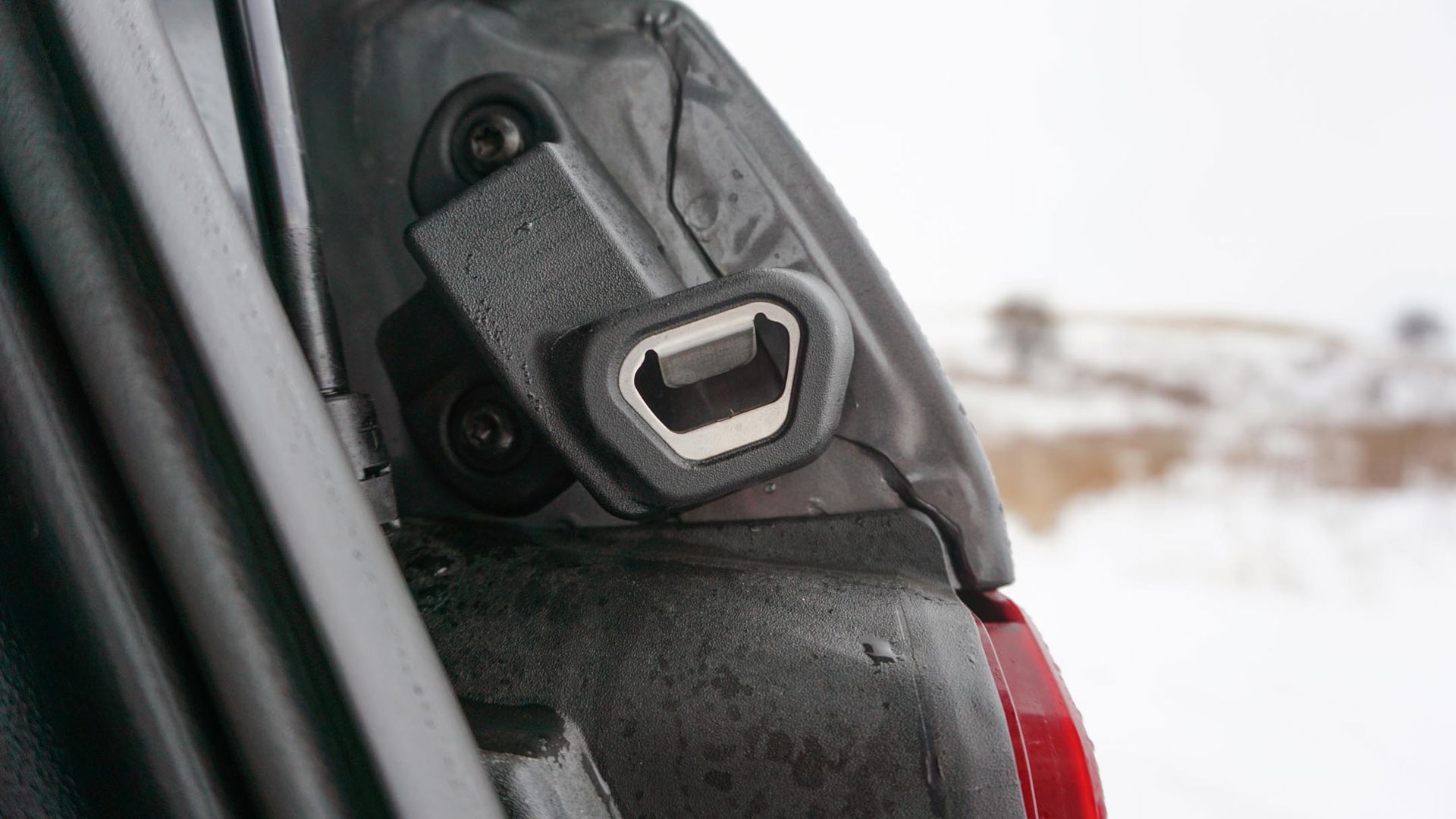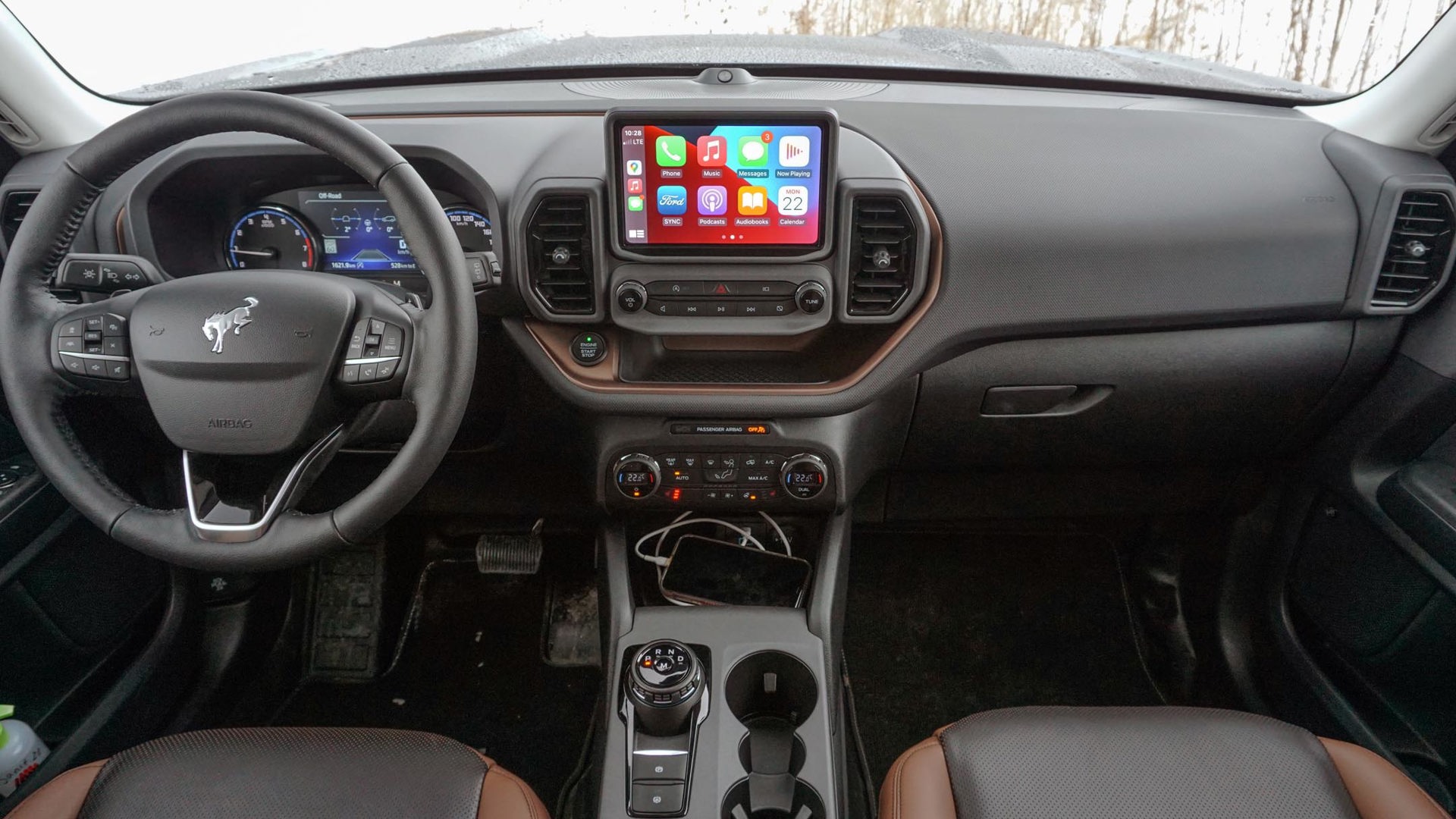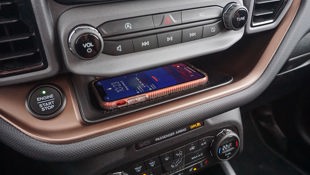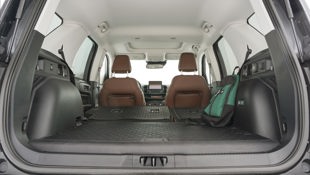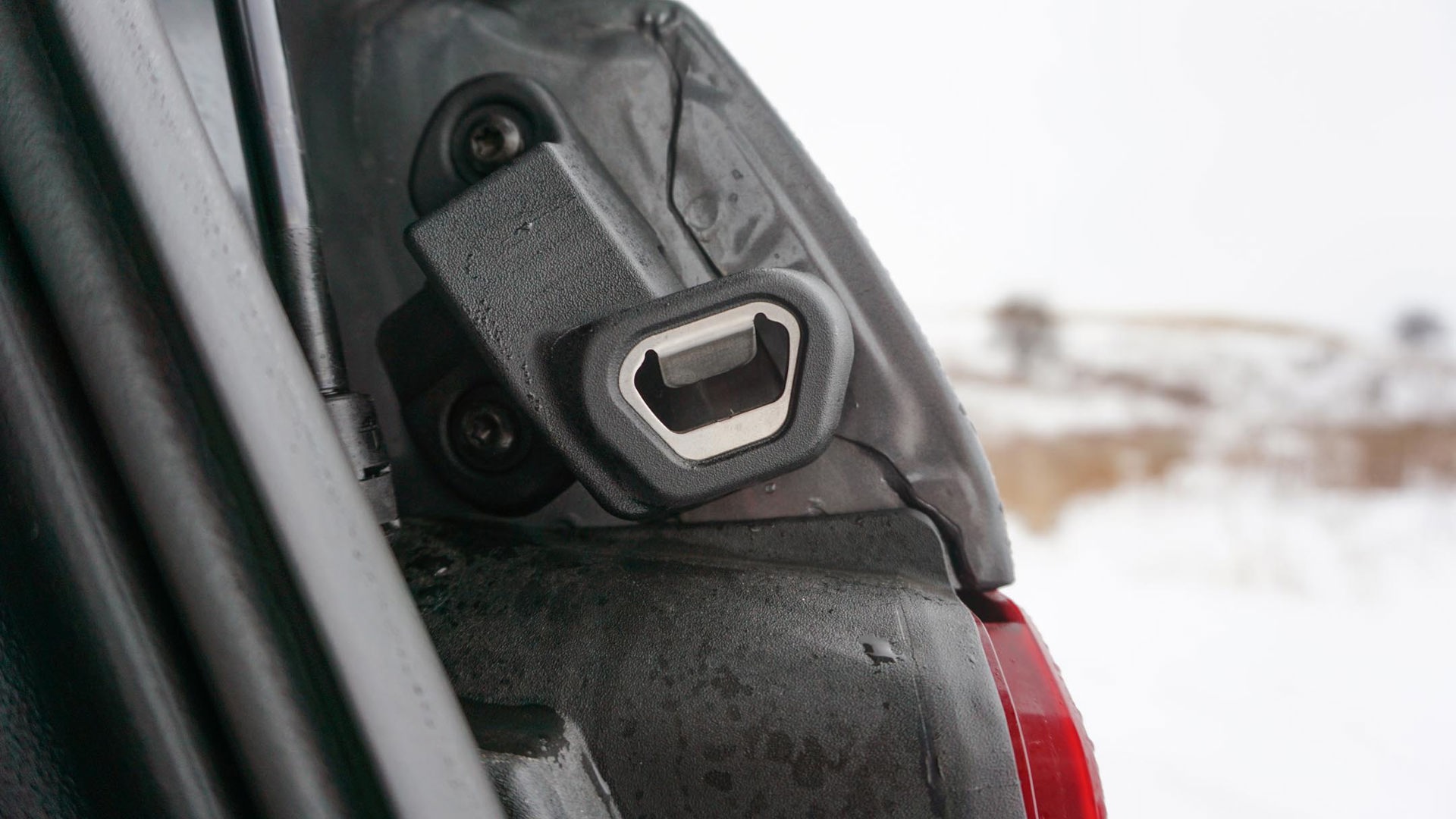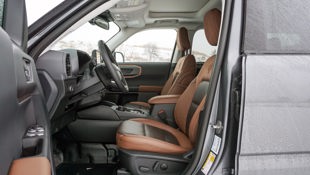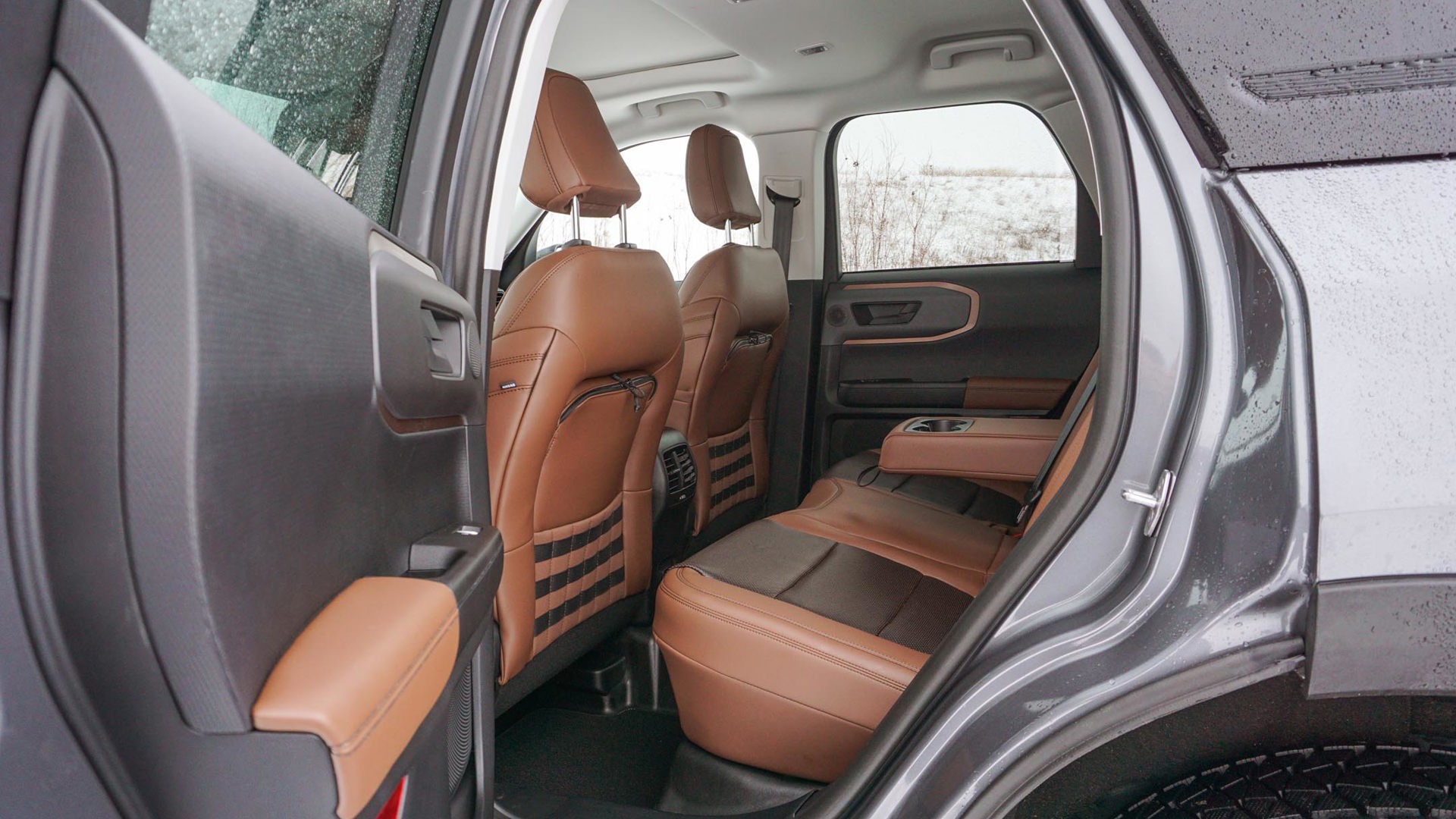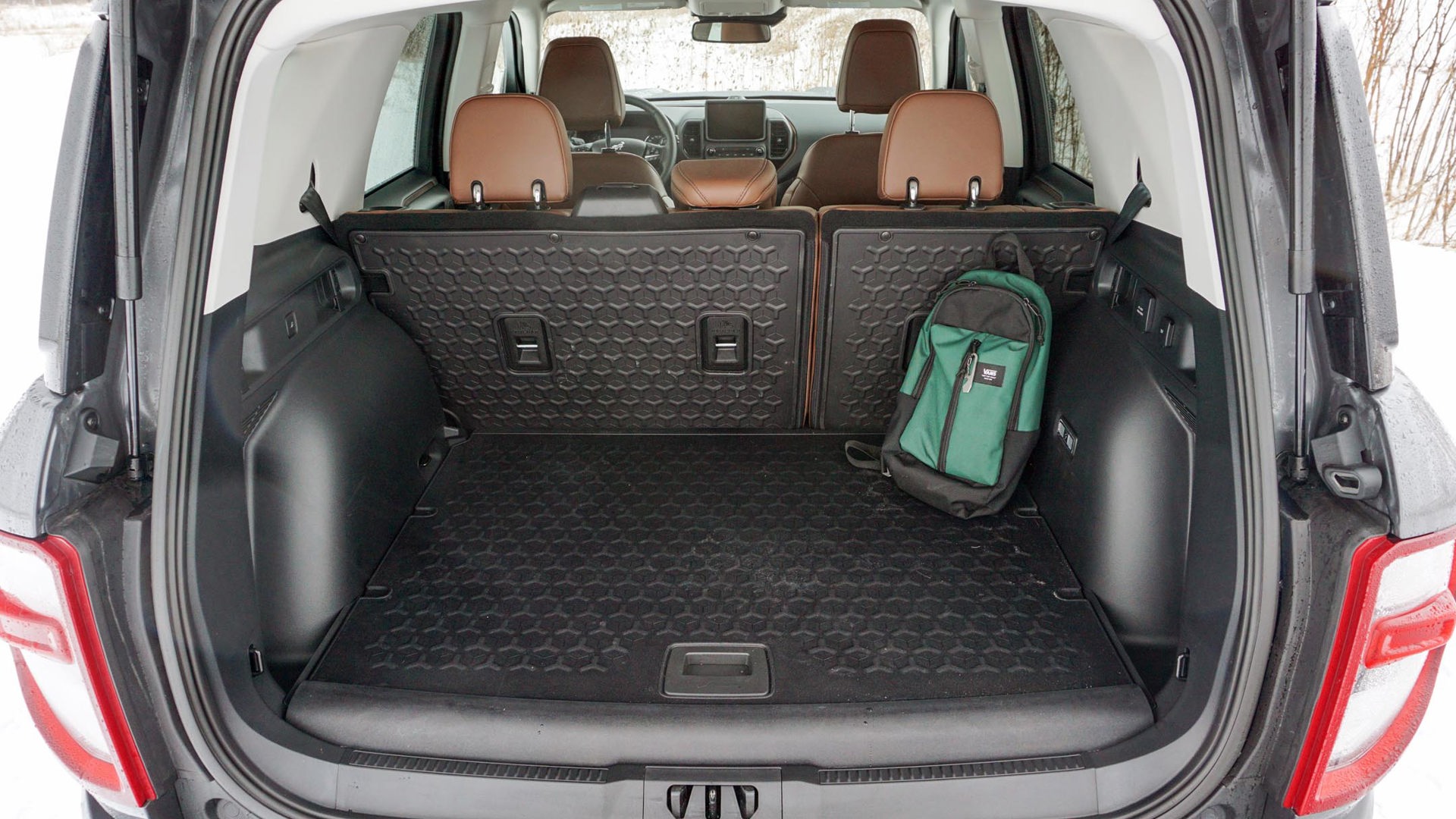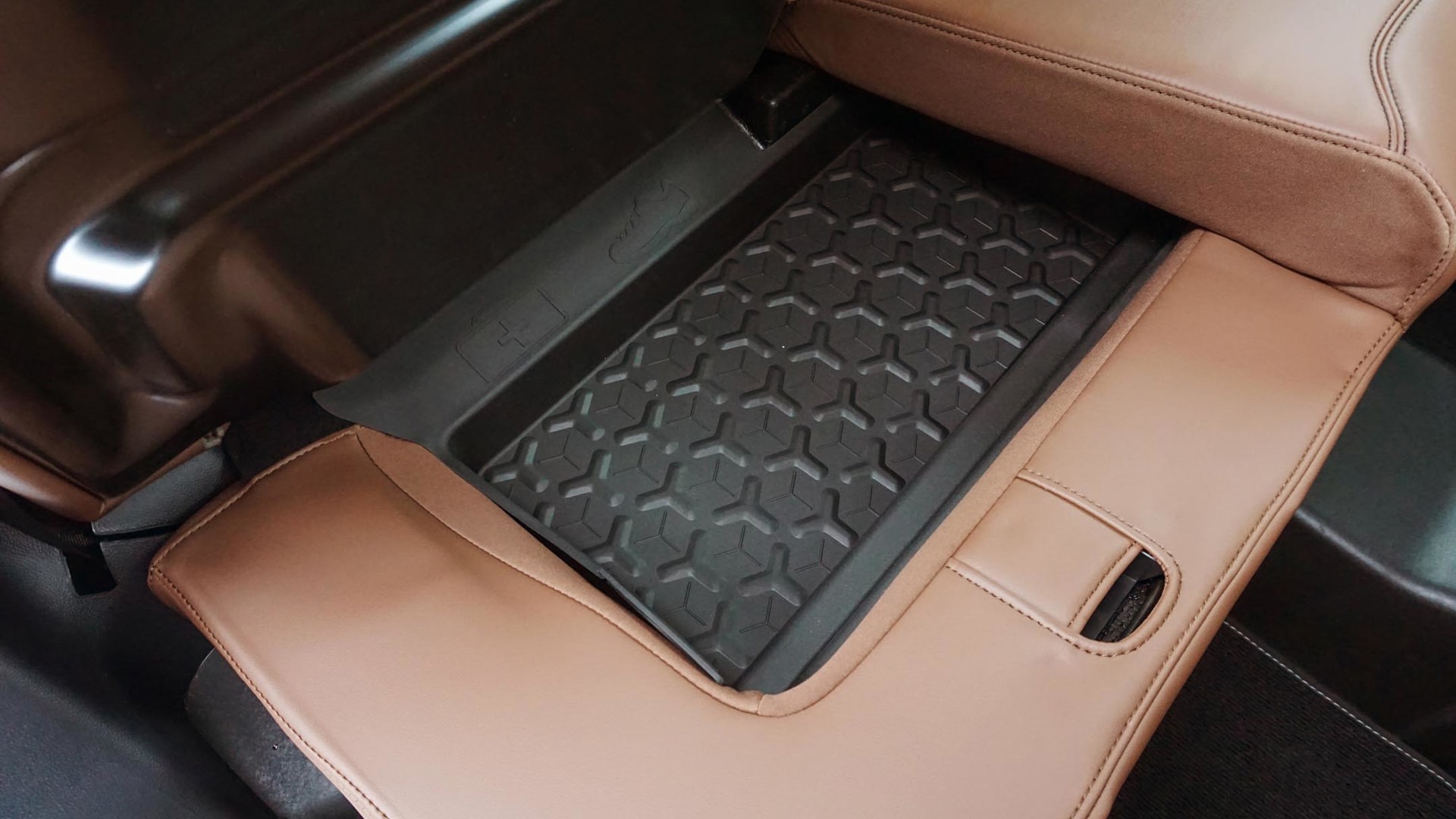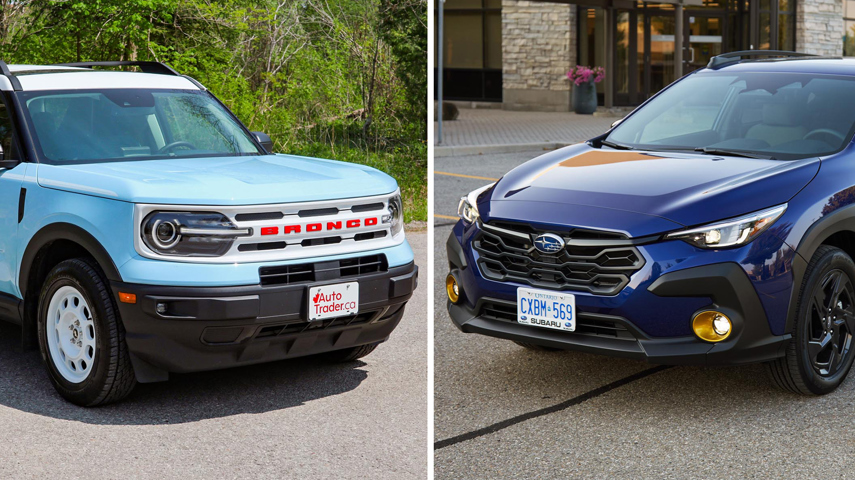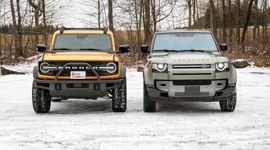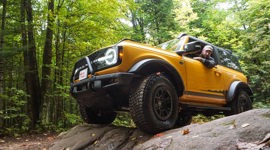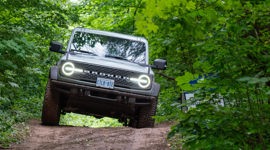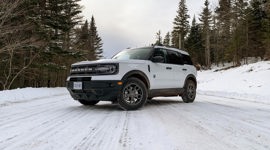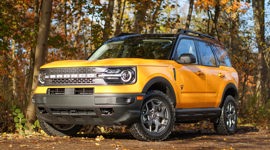 AutoTrader SCORE
AutoTrader SCORE
-
STYLING10/10
-
Safety9/10
-
PRACTICALITY8/10
-
USER-FRIENDLINESS9/10
-
FEATURES8/10
-
POWER10/10
-
COMFORT9/10
-
DRIVING FEEL10/10
-
FUEL ECONOMY8/10
-
VALUE8/10
Contrary to misconceptions circulating on social media, the SUV you see before you isn’t the Ford Bronco.
It’s the 2021 Ford Bronco Sport Badlands, and despite looking a little like its larger sibling at a passing glance – and leaning on that storied name – this small sport utility shares almost nothing in common with the Jeep Wrangler rival that’s currently on the comeback trail. But that doesn’t mean this baby Bronco isn’t ideally suited for virtually every one of the adventures you might have planned. In fact, it just might be better.
Driving Feel: 10/10
OK, if you aspire to do some serious rock-crawling with a Bronco-badged SUV, you’ll want to wait for one of the full-size versions that should be on sale sometime this summer. But if you’re shopping for a daily driver that can double for some weekend fun, the Bronco Sport should more than suffice – especially in this Badlands trim.
While every Bronco Sport features four-wheel drive, the most expensive model gets an upgraded twin-clutch system that reacts more quickly to surface conditions and splits torque accordingly. It also adds two extra settings to the terrain management system specifically tailored to rocks and mud, so it’s possible to take this thing just a little further off the beaten path and make it back in one piece.
On the road, however, it’s just as surefooted as any sport utility this size. It boasts the same almost truck-like rigidity as the Ford Escape with which it shares a platform, only it’s far more fitting with the Bronco Sport’s rugged-ish demeanour. It also does nothing to disrupt what’s an outstanding ride quality otherwise.
There’s good suspension damping and a tremendous smoothness that makes it mild-mannered in just about every situation imaginable. The well-weighted steering is a nice touch, too, requiring just a little bit of extra effort to change direction while offering tremendous responsiveness. Sure, there’s a hint of body roll, but it’s only noticeable when hustling through a roundabout or taking a highway on-ramp with a little too much speed.
Power: 10/10
Just like its platform-mate, the Bronco Sport’s top trim gets an engine all its own. It’s the same turbocharged 2.0L from the Escape Titanium – not to mention the Lincoln Corsair – and it makes the same 250 hp to go with 277 lb-ft of torque on premium-grade gas (Ford doesn’t say how much it makes on the minimum recommended 87 octane), all of which is more than enough to motivate this right-sized sport utility. While there’s a slight bout of turbo lag early on due to the rather late arrival of all that torque (it doesn’t reach peak until 3,000 rpm), it feels far more linear than what was experienced during testing of the 2.0L-powered Escape.
It seems the issues experienced with this eight-speed automatic transmission in other applications have been addressed, too, with none of the noteworthy shudders or awkward shifts present during testing. Gently roll onto the throttle and it smoothly works its way through gears as momentum increases, the shifts themselves about as satisfying as they come in this class.
Fuel Economy: 8/10
While the four-wheel drive system can be locked for extra traction, it’s fully automatic and shuffles torque around on its own. That also means it won’t send power to the rear wheels outside of certain situations – accelerating, cornering, or slipping – in order to cut down on fuel consumption. (There’s even a handy little screen in the instrument cluster where you can watch in real time which wheels are providing driving force.)
Given the frequency with which the rear wheels were disconnected from the drivetrain during testing, thus reducing mechanical drag, real-world fuel consumption wasn’t quite as low as perhaps it should’ve been. Granted, the 9.9 L/100 km averaged over the course of approximately 660 km is better than its official combined rating of 10.1 L/100 km; and this tester was wearing winter tires. But that number wasn’t especially impressive, even in cold conditions, given the similarly off-road-inspired Subaru Outback Outdoor XT with its turbo engine carries an official combined rating of 9.1 L/100 km.
Value: 8/10
While perhaps not obvious at first glance, that version of the Outback is likely the most natural competitor for the Bronco Sport Badlands. Both are the most adventure-ready trims in their respective lineups, at least until the Outback Wilderness arrives, with upgrades to help in that regard, and they’re priced rather closely; $42,099 before options and taxes in the case of this Bronco Sport tester versus $41,170 for the Outback Outdoor XT.
Unlike that Subaru, however, it’s not a case of what you see is what you get with the Bronco Sport. No, there’s more to it than meets the eye – and it all hits the bottom line. While the starting price of the top-of-the-line Badlands trim includes beefed up suspension and drivetrain components, as well as some extra skid plates underneath, to get the package that includes the stylish leather upholstery seen here, as well as a heated steering wheel, dual-zone climate control, and power sunroof, among others, adds $3,000 to the price tag. This tester also included a tow package, upgraded tires (swapped out during testing in favour of winter rubber), and adaptive cruise control, pushing the pre-tax price to a rather steep $47,249.
Other players in this space include the Toyota RAV4 Trail TRD Off Road, which tops out at a little more than $45,000 before tax, the slightly smaller Jeep Compass Trailhawk that lands within range of this with all the options boxes checked, or the Jeep Cherokee Trailhawk that can easily eclipse $50,000.
Features: 8/10
Without the upgrades, the Bronco Sport Badlands feels more utilitarian than extravagant. Yes, the eight-inch touchscreen infotainment system features a built-in Wi-Fi hotspot and satellite radio (both of which require paid subscriptions, mind you), as well as Apple CarPlay and Android Auto; and the front seats are heated. But the standard upholstery is cloth, the steering wheel isn’t heated, and the floor is rubberized instead of carpet.
That’s because whether you plan to use this sport utility to find adventure at every opportunity or not, it was packaged to at least look and feel like it’s ready to. That’s why the focus is on all the extra off-road goodies that come with this Badlands trim. Or why there are clever solutions just about everywhere you look, like the roof rails and tow hooks outside, or the same kind military-inspired webbing on the front seatbacks you get in the hardcore Jeep Wrangler Rubicon – handy for stashing gear on the go – and carabiner-style closing hooks along the rear window sills to keep bags from spilling.
There’s also a grounded 110-volt outlet in the cargo area (there’s another one on the back of the centre console), as well as small flood lights on the inside of the tailgate, and a bottle opener hidden above the passenger-side taillight. The rear glass also opens independent of the tailgate, an under-utilized feature in today’s SUV market, but the tailgate itself isn’t powered or height-programmable – a shame at this price point.
Safety: 9/10
Also unfortunate given the asking price is that adaptive cruise control isn’t included (granted, at $850, it’s not a particularly expensive upgrade). The optional system works in stop-and-go traffic and also includes lane-centring assist as well as traffic sign recognition, though rather frustratingly, it will automatically slow the vehicle down should the speed limit change. While the setting can be adjusted, it’s a rude awakening on a country road when the brakes are suddenly applied as the speed limit drops from, say, 80 km/h to 70.
Should you be satisfied without such driver assistance, the Bronco Sport Badlands comes equipped with lots of other good stuff that works quietly in the background, including blind-spot monitoring with rear cross-traffic alert, lane-keep assist (that can easily be disabled via a button on the end of the signal stalk), automatic high-beams, and forward automatic emergency braking.
Styling: 10/10
While the Trailhawk versions of both the Jeep Compass and Cherokee might appear at first blush as the most likely competitors to this Bronco Sport Badlands, much like the Outback Outdoor XT, this take on the small soft-roader is that of the weekender: a tastefully styled sport utility that’s perhaps just a little more modest about its capabilities – even when finished in a flashy exterior hue like Cyber Orange. It certainly stands out from the average SUV no matter the paint colour, with its so-called safari-style roof that’s taller towards the back, or the retro-inspired fascia that’s the closest feature it shares with its larger sibling. But it’s all just a little less attention-grabbing than some of its rivals.
The cabin certainly looks the part of an outdoor plaything, though, with the upgraded leather seats in this tester outclass just about anything else in the segment, including the top-of-the-line Outback Premier XT and its tan leather upholstery. The perforated brown and tan cowhide is contrasted by suede that looks like it was pulled from the fancy King Ranch grade of the massive Ford Expedition, adding a bit of premium flair to the interior.
Comfort: 9/10
The seats aren’t especially well contoured, but the driver’s chair remained mostly comfortable and supportive throughout the course of testing, with only a hint of upper-leg discomfort setting in during an initial multi-hour drive due to the rather flat bottom cushion. However, there’s reason to believe that the person at Ford who’s responsible for the heating elements in the seats may well be the same one who decided that the internal temperature of McDonald’s apple pies must, in fact, match that of molten lava. Maybe it’s the leather they come wrapped in, but these seats have to be the hottest around, even in their lowest settings.
The Bronco Sport’s satisfying ride quality means it’s able to absorb all but the biggest cracks in the pavement, and is nearly perfect on smooth surfaces. Should the roadway become porous, however, quite a bit of road and wind noise makes its way inside – some of which is undoubtedly a result of its boxy and upright shape, but there also seems to be a lack of sound-deadening below that leads to lots of what’s happening underneath permeating the space.
Practicality: 8/10
The boxy shape of the Bronco Sport means there’s plenty of headroom to go around – a surprising shortcoming in most entries in this class. Cabin width is perfectly appropriate for a vehicle this size, too, but it’s not especially accommodating in the second row. The rear doors don’t open very wide, while there’s nearly 75 mm (three inches) less legroom than in the Outback, and almost 100 mm (four inches) less than the comparably sized Escape.
The Escape also benefits from second-row seats that can be slid fore and aft for more passenger or cargo room – a feature that’s absent here. And while the liftover height is quite tall for a compact sport utility in order to fit the full-size spare tire under the floor, there’s still 833 L of cargo space to work with behind the back seats, and 1,702 L with them folded. Both of those figures are less than what the Escape offers, not to mention the Outback and RAV4, though it’s a boxy space all the way through to the front seatbacks.
User Friendliness: 9/10
The flood lights, hooks, and power outlet certainly add to the cargo area’s convenience, but it’s short two seemingly simple features that carry big benefits. The first is a set of quick-release handles in the back to fold the rear seats, while there’s also no retractable cargo cover, standard or optional, that seems like an especially bizarre omission.
Up front, there’s all kinds of small-item storage, including a slot beneath the head unit that’s big enough to stash a smartphone, as well as another tray ahead of the cupholders that houses this trim’s wireless charger, and zippered pockets on the front seatbacks above the webbing. There’s even a hidden storage compartment beneath the passenger-side back seat.
Neither the Android Auto nor the Apple CarPlay connections are wireless, though there are both USB-A and USB-C ports for hooking up your phone, plus one more of each in the console bin (interestingly, there are no charging ports in the rear seating or cargo areas). The infotainment system itself could benefit from a physical home button – especially when using either smartphone interface – but the responsiveness of the screen is outstanding, while the menus and functions are simple to navigate.
There are also physical controls for volume and tune, as well as a whole bank of switchgear for the HVAC system. While the buttons for the heated seats and steering wheel get lost beneath some of the more boldly labelled ones (not to mention the massive temperature dials), none of it’s difficult to use at a glance.
Down on the console, a rotary gear selector isn’t the most intuitive option but it works well, plus there’s switchgear behind that for all kinds of off-road features. The drive mode dial is the centrepiece, with buttons around it for the four-wheel drive and differential locks, as well as traction control and trail control systems. The former, while helpful on the road, crucially keeps the wheels spinning in deep stuff like snow, sand, and mud when shut off, while trail control works like off-road cruise control and manages the throttle and brakes so you can focus on any obstacles ahead.
The Verdict
So who’s going to be best-served by abandoning their big-Bronco dreams in favour of the Bronco Sport Badlands? Realists.
While there’s certainly no shame in buying a lifestyle vehicle like the upcoming Bronco and its removable roof – just ask the countless Jeep Wrangler owners who’ve never gone further from the pavement than a gravel parking lot – this Bronco Sport has more than enough capability to serve in the capacity of weekend warrior while remaining civilized enough to drive to work every day.
Unfortunately, the cramped second row means it’s not exactly ideal as a family hauler, and the Outback, RAV4, or even the Escape are better options if you need some extra space. But if you can live with the somewhat limited room it has – not to mention the cargo management miscues like the lack of a privacy cover or power tailgate – there’s plenty to like about the character-filled 2021 Ford Bronco Sport Badlands. Adventure awaits.
| Engine Displacement | 2.0L |
|---|---|
| Engine Cylinders | Turbo I4 |
| Peak Horsepower | 250 hp @ 5,500 rpm |
| Peak Torque | 277 lb-ft @ 3,000 rpm |
| Fuel Economy | 11.1 / 8.9 / 10.1 L/100 km cty/hwy/cmb |
| Cargo Space | 833 / 1,702 L seats up/down |
| Model Tested | 2021 Ford Bronco Sport Badlands |
| Base Price | $40,199 |
| A/C Tax | $100 |
| Destination Fee | $1,900 |
| Price as Tested | $47,249 |
|
Optional Equipment
$5,050 – Badlands Package, $3,000; Co-Pilot360 Assist+, $850; Class II Tow Package, $600; All-Terrain Off-Road Tires, $600
|
|

